Betta fishes are naturally found in Cambodia, Thailand, and Vietnam.
Betta fishes can survive in floodplains, canals, rice paddies, and open water bodies.
Betta fishes prefer only a few unique and distinguished varieties of plants near them.
Continue reading to know about the 40 best plants for Betta Fish.
40 Best Plants for Betta Fish
- Amazon Sword
- Pygmy Chain Sword Plant
- Glossostigma
- Marimo Moss Balls
- Mini Bolbitis
- Pennywort
- Cryptocoryne Green Gecko
- Duckweed
- Swampweeds
- Bucephalandra
- Anubias Barteri
- Chinese wisteria
- Eelgrass
- Banana Plantmas Moss
- Java Fern
- Aponogeton Ulvaceus
- Christmas Moss
- Amazon Frogbit
- Water Clover
- Water Sprite
- Java Moss
- Anacharis
- Hornwort
- Cryptocoryne Parva
- Alternanthera Rosaefolia
- Betta Bulb
- Pogostemon stellatus ‘Octopus.’
- Peace Lily
- Bamboo
- Marsilea Minuta
- Pogostemon Helferi
- Banana Plant
- Anubia Nana
- Carolina Fanwort
- Silk Plant
- Staurogyne Repens
- Salvinia minima
- Madagascar lace plant
- Rotala Rotundifolia
- Tiger Lotus
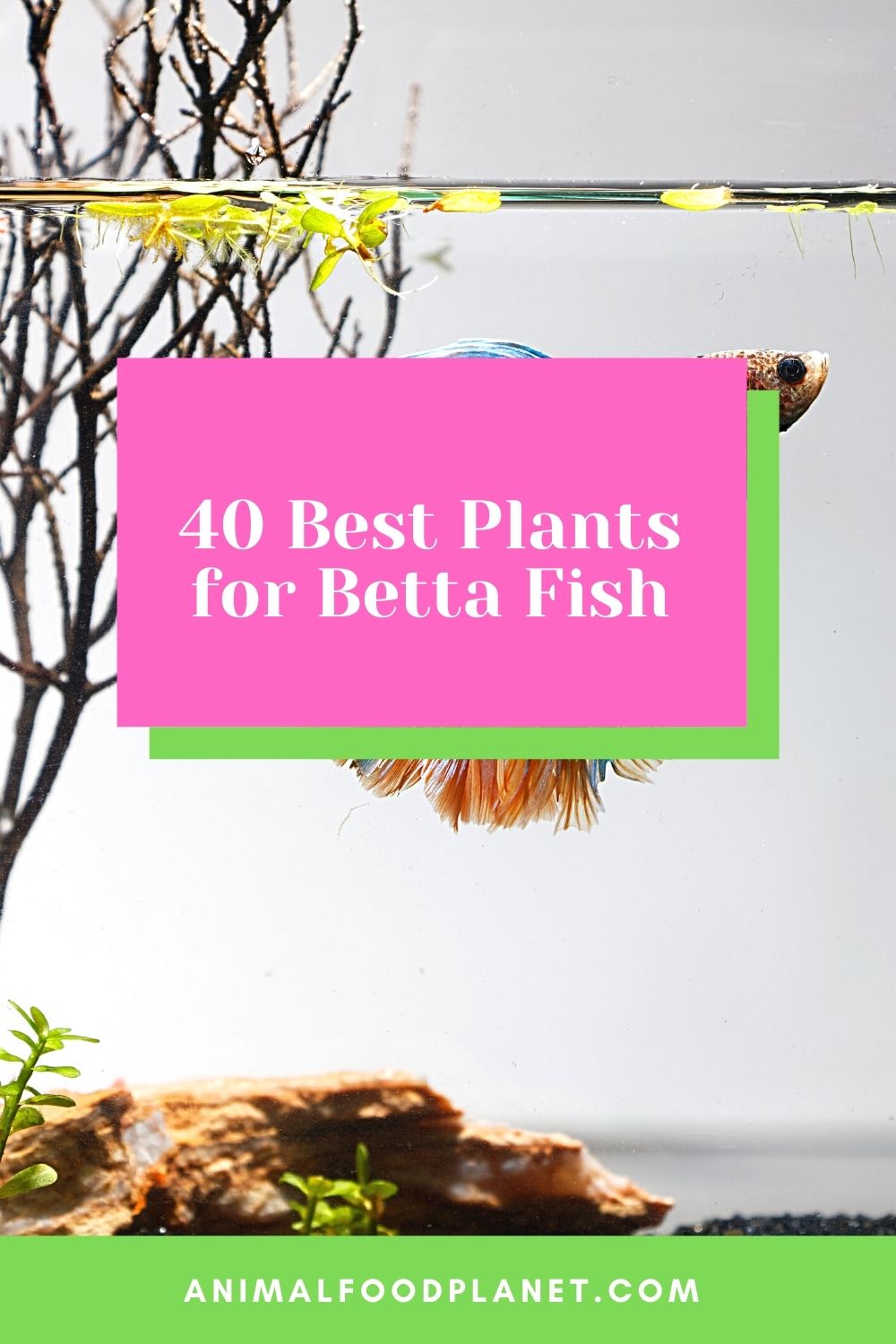
40 Best Plants for Betta Fish
Best Plants for Betta Fish
1. Amazon Sword
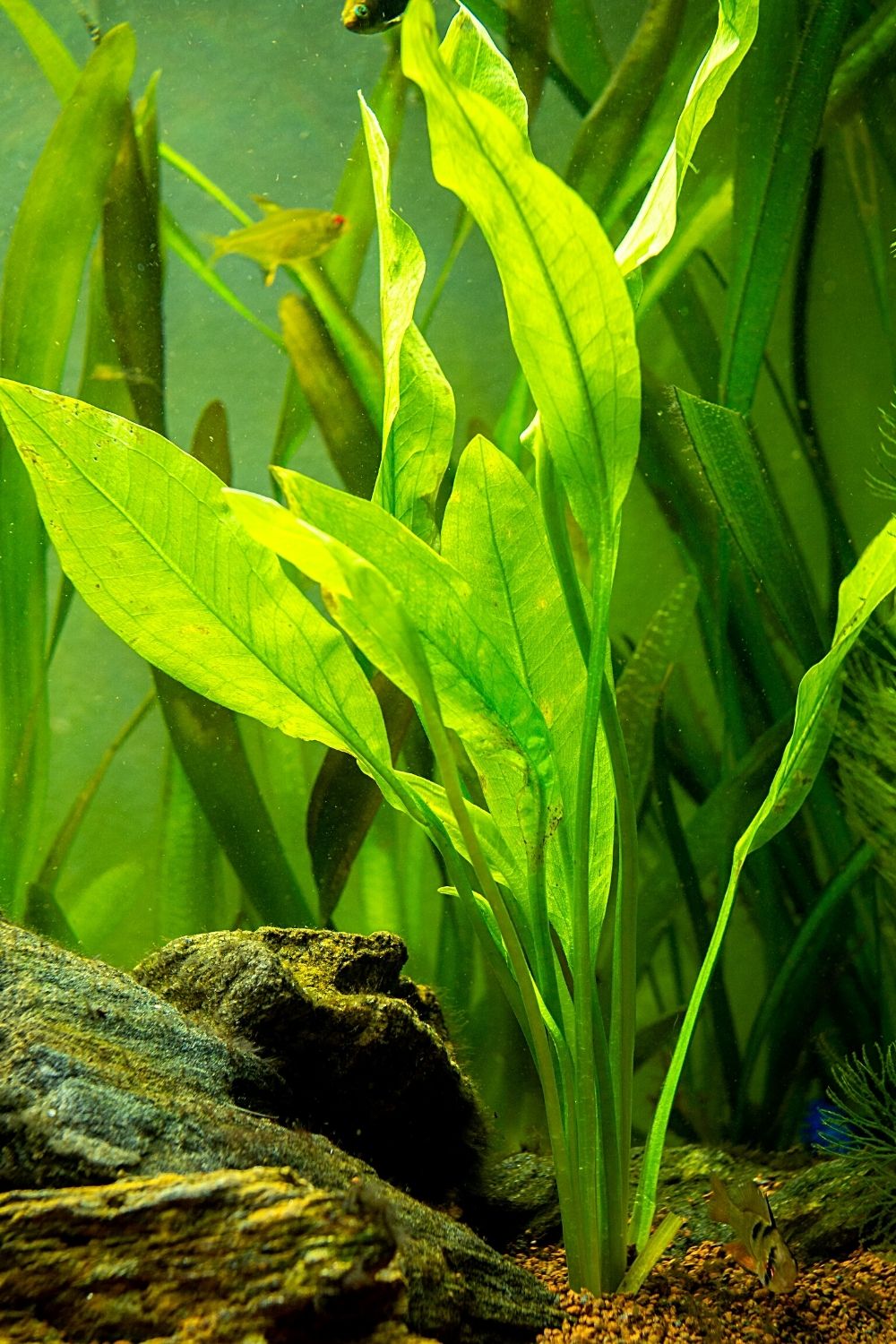
Amazon Sword is a very popular aquatic plant that you can grow for your betta fish’s aquarium
Amazon Sword is an aquatic plant, very popular among fishkeepers around the globe. Amazon Sword is quite easy to maintain and grow in home-based aquariums.
However, it’s recommended to take care of the plant during the early planted days.
- Scientific name: Echinodorus grisebachii
- Family: Alismataceae
- Temperature: 72 – 82° F (22-28°C)
- Fertilizer: benefits from regular doses of an iron-rich fertilizer once weekly after every water change
- pH: 6.5-7.5
- Soil: aquarium gravel
- Lighting: at least 10 hours of bright light each day
- Growth rate: slow and steady
- Humidity: 70 to 90%
2. Pygmy Chain Sword Plant
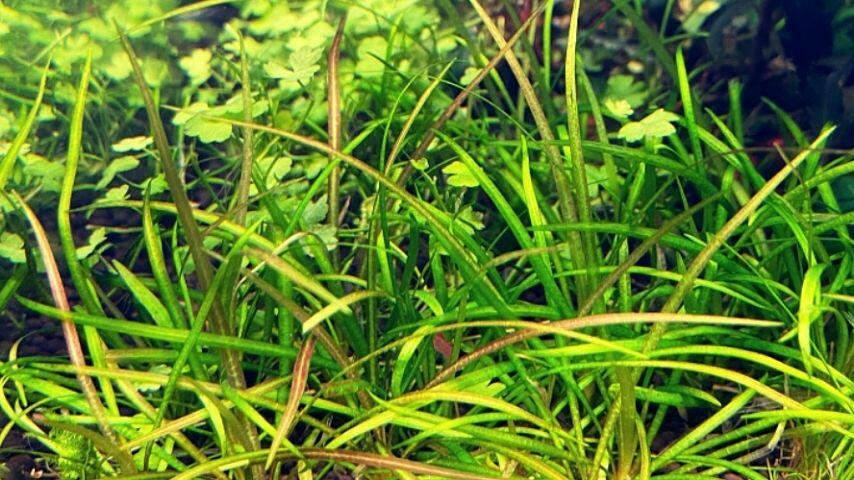
Photo Credit: @greencubescaper on Instagram!
Pygmy Chain Sword Plant is known for its fast-growing pace, durability, and hardiness in moisture.
Many beginners prefer planting Pygmy Chain Sword Plant, as they’re easy to maintain year round.
- Scientific name: Echinodorus tenellus
- Family: Alismataceae
- Temperature: between 71-78° F (22 – 26°C), but will tolerate temperatures of up to 82° F (28°C)
- Fertilizer: do well with weekly fertilization
- pH: 6.2 to 7.5
- Soil: nutrient-rich soil should be well-draining
- Lighting: moderate to high lighting
- Growth rate: fast
- Humidity: 70%
3. Glossostigma
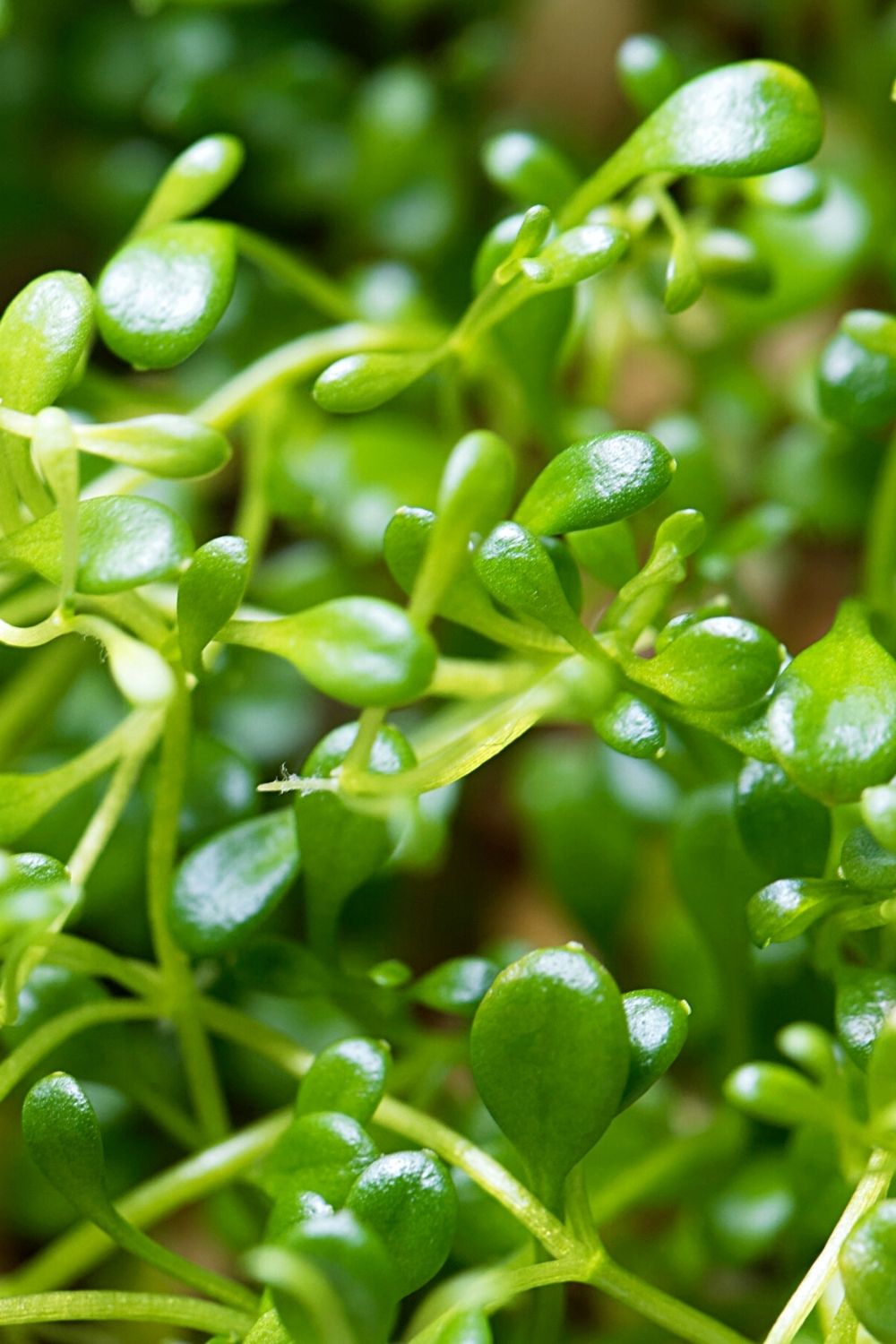
Glossostigma, an aquatic plant grown for betta fish, is best kept in well-illuminated areas
Glossostigma is a Tropical Aquarium Plant found in New Zealand in demand. Its spacious height of 2-3 cm is among the top preferences for aquarium experts.
Glossostigma is kept in well-illuminated areas with seasonal fertilization.
- Scientific name: Glossostigma Cleistanthum
- Family: Phrymaceae
- Temperature: 39-86° F (4 – 30°C)
- Fertilizer: do well with weekly fertilization
- pH: 4 – 7
- Soil: nutrient-rich soil should be well-draining
- Lighting: bright light to be provided for a minimum of 10 hours.
- Growth rate: fast
- Humidity: 70%-90%
4. Marimo Moss Balls
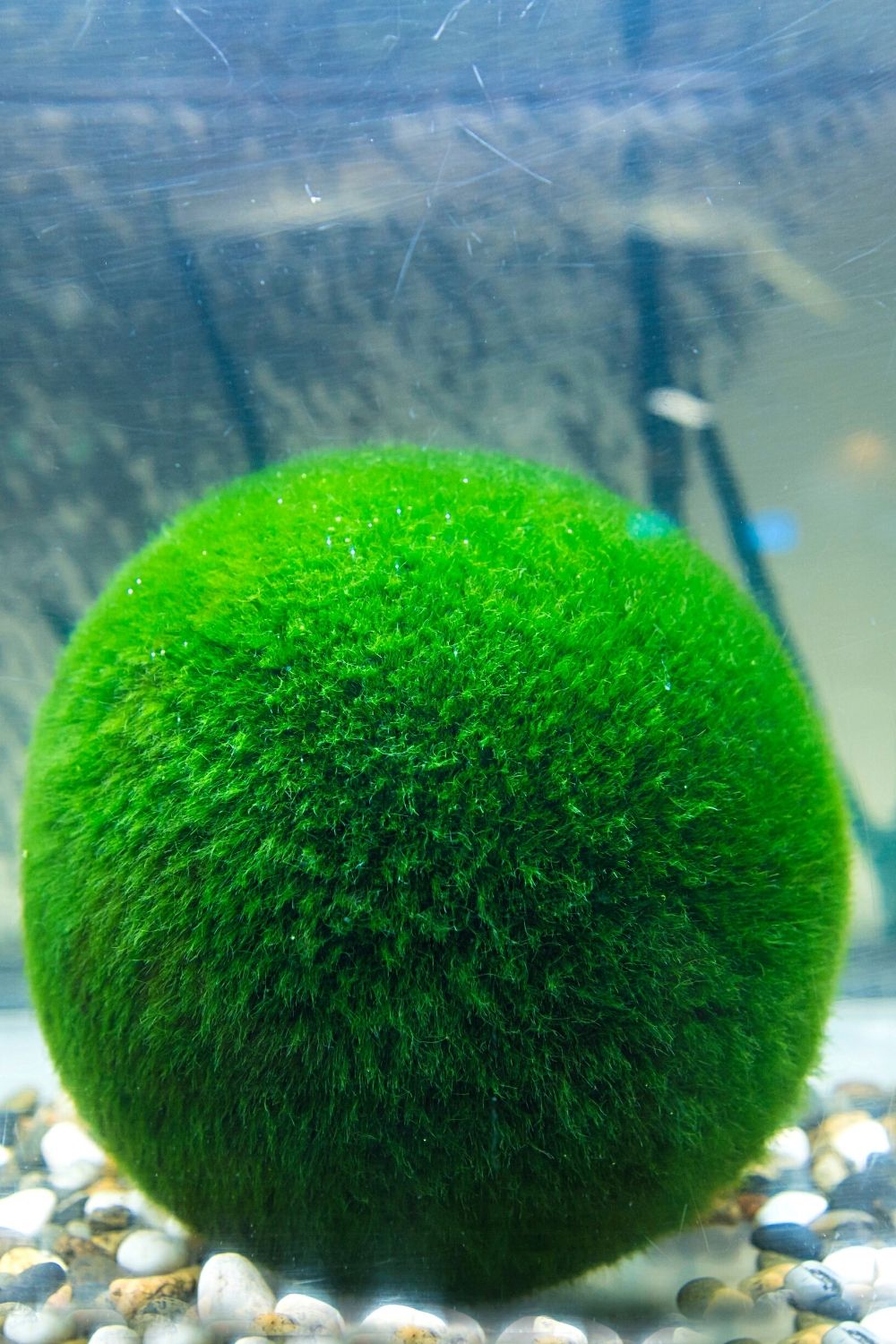
If you’re looking for a low-maintenance aquatic plant for your betta fish, Marimo Moss Balls is your best bet
Marimo Moss Balls are seaweed balls that don’t depend upon fertilizers or food. Marimo Moss Balls depend on the vital process of photosynthesis and grow themselves.
The maximum growth is around 5mm per year.
- Scientific name: Aegagropila linnaei
- Family: Pithophoraceae
- Temperature: 72-78° F (22-25° C)
- Fertilizer: This doesn’t require them as they make their own food using photosynthesis
- pH: Tap water of pH 6.0-8.0
- Soil: Mix 15% peat moss with 85% of bonsai soil or clay
- Lighting: Indirect lighting from windows or normal lighting in the household
- Growth rate: slowly: up to 5 mm per year,
- Humidity: 80%
5. Mini Bolbitis
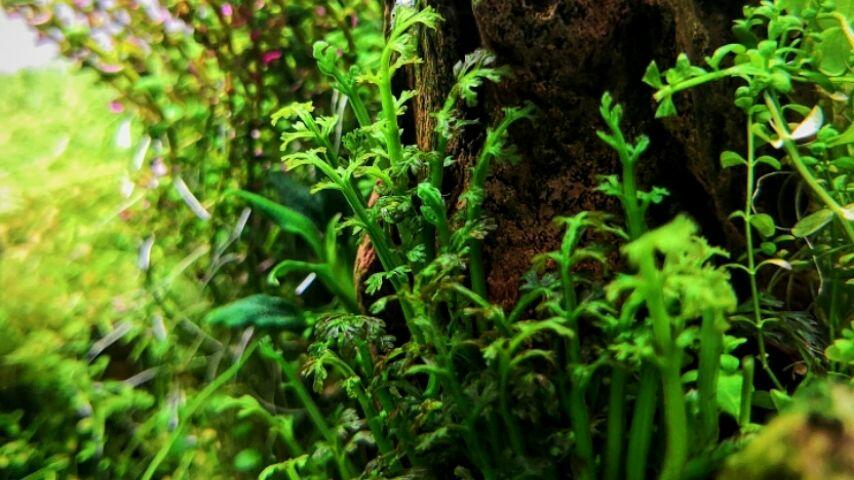
Photo Credit: @ziomekos on Instagram!
Mini Bolbitis is a semi variant of Bolbitis Heudelotii, which are also known as Ferns. It can possibly take 2-3 months to grow its leaves.
However, under optimum conditions, Mini Bolbitis grow best.
- Scientific name: Bolbitis Difformis
- Family: Dryopteridaceae
- Temperature: 68° – 80° F (20° – 26° C)
- Fertilizer: equalized liquid fertilizer once a week.
- pH: 5.5 – 8.0.
- Soil: moderately moist soil,
- Lighting: Low to moderate.
- Growth rate: slow, takes 2 months to mature into an adult plant.
- Humidity:70-90%
6. Pennywort
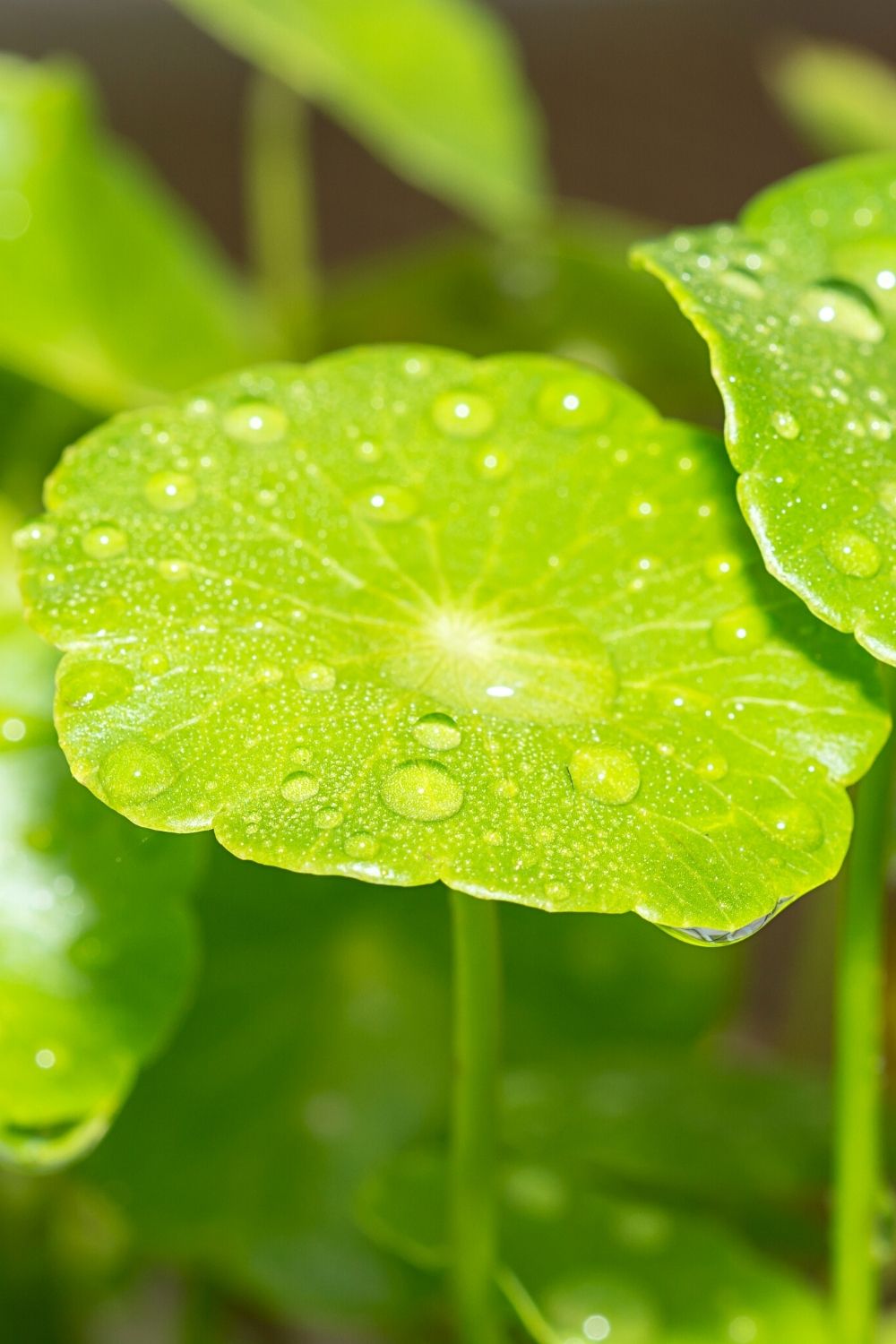
Pennywort is a sustainable and long-living plant to grow in an aquarium full of betta fish
Pennywort, also known as Centella Asiatica, is commonly found in damp habitats, grasslands, pastures, and wetlands.
Pennywort is also a sustainable and long-living plant, which is also considered an herbaceous plant.
- Scientific name: Hydro cotyle ranunculoides
- Family: Araliaceous (Ginseng)
- Temperature: 41-86°F (5 – 30°C)
- Fertilizer: Doesn’t require fertilization if it’s refreshed yearly
- pH: 6 – 7
- Soil: Requires consistently moist soil.
- Lighting: long-lasting, direct light
- Growth rate: rapid growth rates (up to 20cm per day)
- Humidity:70-80%
7. Cryptocoryne Green Gecko
Cryptocoryne Green Gecko offers a great variety of aquarium tanks and pots where Betta fishes are found in numbers.
Their leaves are red-brown towards the center, with light greenish colors throughout the plant structure.
- Scientific name: Cryptocoryne Green Gecko
- Family: Araceae
- Temperature: 59 – 86°F (15-30°C)
- Fertilizer: needs regular fertilization
- pH: 6-9
- Soil: Enriched sand, aquarium soil or gravel
- Lighting: low light and even high indirect light.
- Growth rate: medium
- Humidity:70-80%
8. Duckweed
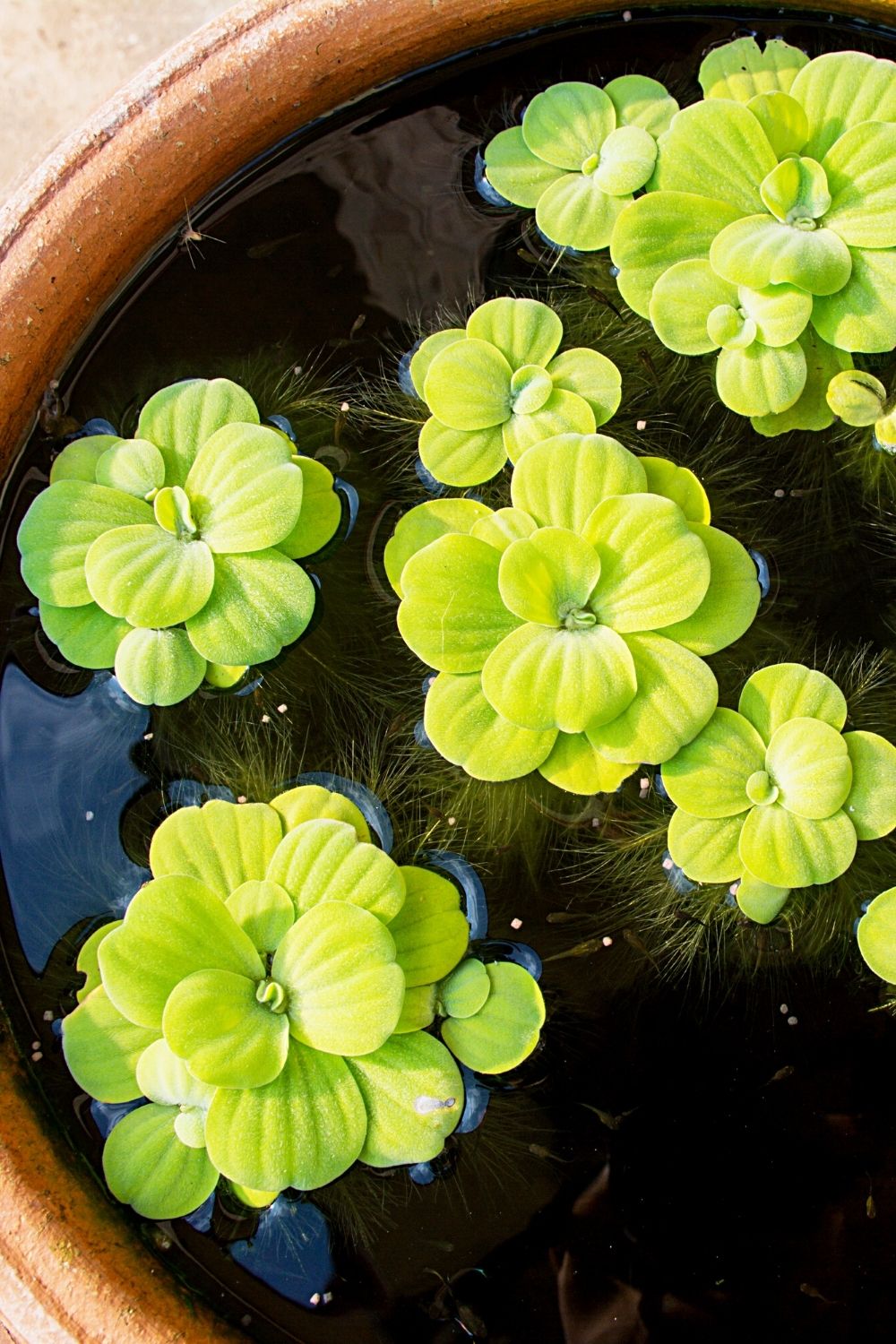
Duckweed helps in lowering the effect of algae in your betta fish’s aquarium
If you are looking to decrease the effect of Algae in your aquarium, then Duckweed is the best pick. Duckweed plants stretch over a flat area, blocking the direct penetration of light.
Duckweed is easy to manage, remove and pick by hand while cleaning the aquarium manually.
- Scientific name: Lemnoideae
- Family: Araceae
- Temperature: 63–79°F (17-26°C)
- Fertilizer: needs regular fertilization
- pH: 6-9
- Soil: soil mixed with a little compost tea, soil and/or humus
- Lighting: indirect sunlight or under fluorescent lighting
- Growth rate: Rapid.
- Humidity:20-40%
9. Swampweeds
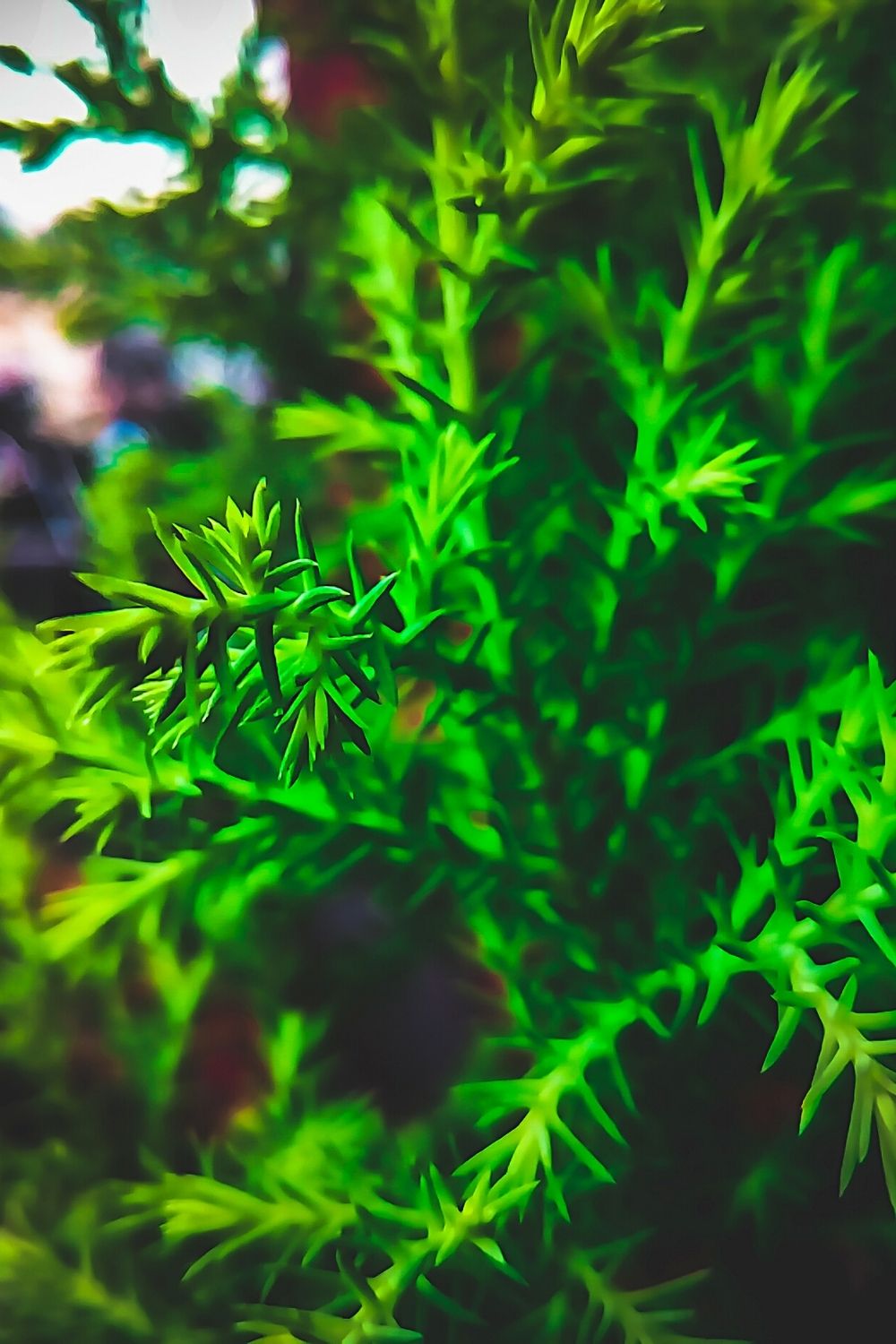
Swampweeds actively growin floating mats and stands found in your betta fish’s aquarium
Swampweeds hail from the Hygrophila plant family, commonly found in streams, lakes, rivers, and open water bodies.
Swampweeds actively grow in dense floating mats and stands.
- Scientific name: Hygrophila
- Family: Acantharean
- Temperature: 71-82°F (22-28°C)
- Fertilizer: Can feed them weekly or daily
- pH: 6.5-7.8
- Soil: moist soil
- Lighting: Bright light
- Humidity:20-30%
10. Bucephalandra
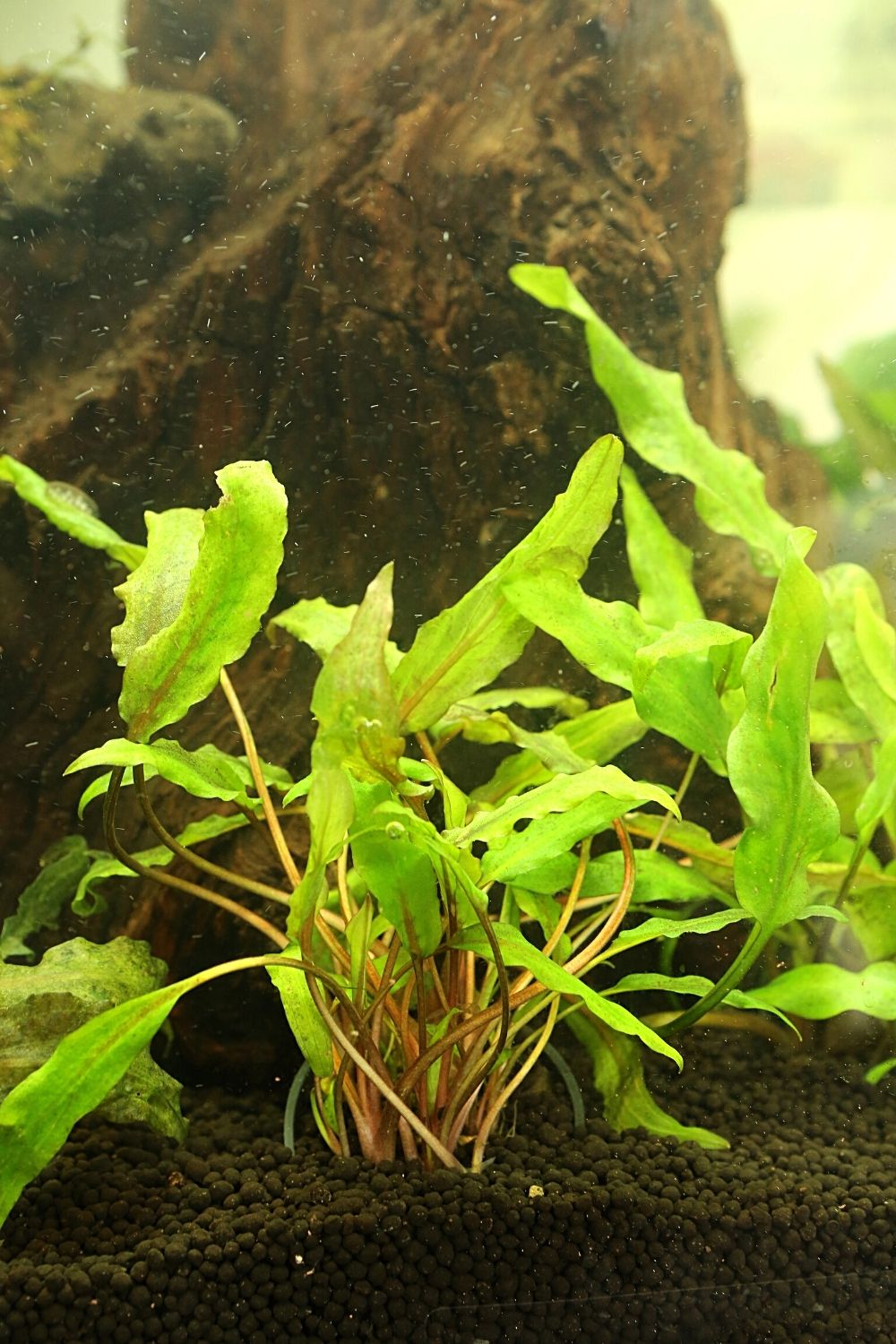
Bucephalandra is an attractive but slow-growing plant that you can grow with your betta fish
Bucephalandra is quite an attractive but slow-growing plant. They grow best where they get minimal light for continuing life processes.
Bucephalandra is quite easy to grow and maintain throughout the year. However, transplantation in aquarium tanks might affect the grown leaves of the plant.
- Scientific name: Bucephalandra
- Family: Araceae
- Temperature: 68-78.8°F (20 – 26°C)
- Fertilizer: add liquid fertilizer twice or thrice in week
- pH: 5 – 7
- Soil: lava rock.
- Lighting: low lighting requirement; able to grow in shaded areas of aquascape
- Growth Rate: slow
- Humidity:20-30%
11. Anubias Barteri
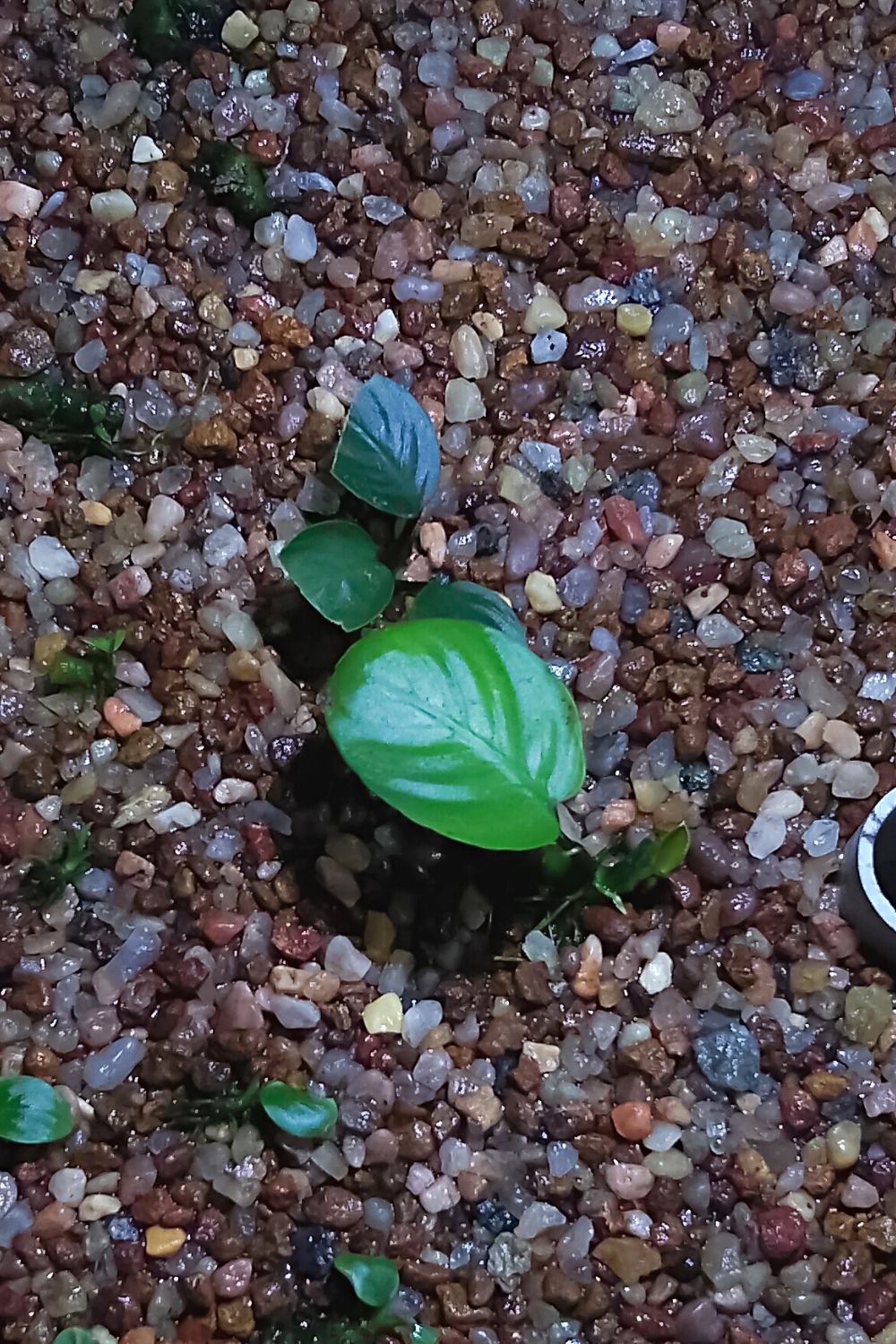
Anubias Barteri can grow at an amazing speed in a tank full of betta fish depending on its environmental conditions
Anubias Barteri is an attractive plant that grows at a decent speed depending on environmental conditions.
The maximum height Anubias Barteri reaches is about 14 inches, and even more if leaves and pastures are kept in ideal conditions.
- Scientific name: Anubias
- Family: Araceae
- Temperature: 60-80°F (18-26°C)
- Fertilizer: generally, it doesn’t require any fertilizer
- pH: 6.5 to 7.5.
- Soil: soil/aqua soil
- Lighting: Low – medium indirect light
- Growth Rate: slow
- Humidity: High humidity (70-100%)
12. Chinese Wisteria
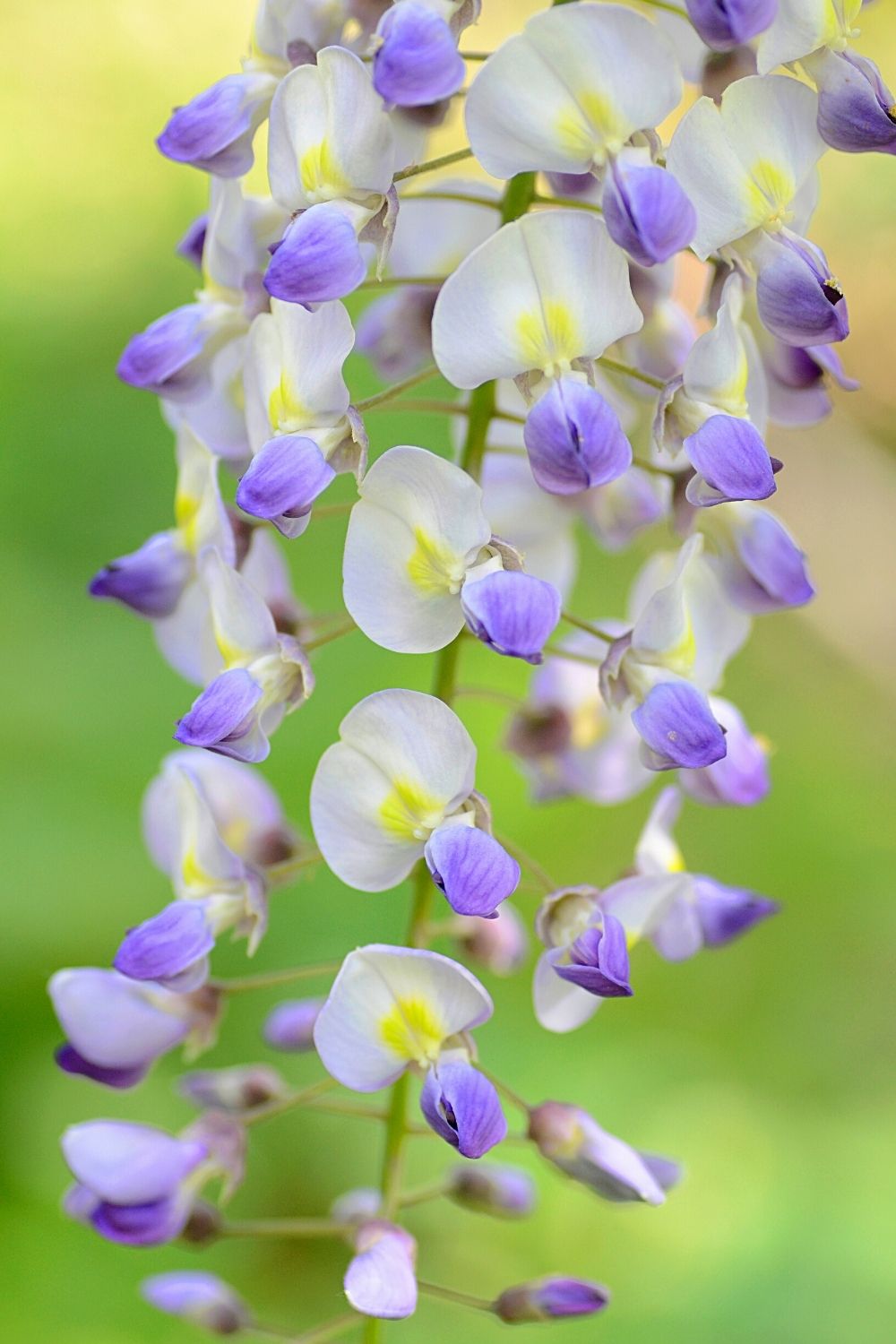
You can grow Chinese Wisteria in your betta fish’s tank as you only need a single stem and root
Chinese Wisteria is also known as a miniature or bonsai tree that can reach up to two feet.
Chinese Wisteria can be placed in aquariums for Betta fishes as it can be grown with a single plant stem and root.
- Scientific name: Wisteria
- Family: Fabaceae (Pea)
- Temperature: 35-40°F (1-4°C)
- Fertilizer: weekly fertilization
- pH: 6.5 to 7.5.
- Lighting: natural/artificial Moderate to high lighting
- Soil: fine gravel or sandy substrate (best to mimic their natural conditions)
- Growth Rate: Fast
- Humidity:30 to 60%
13. Eelgrass
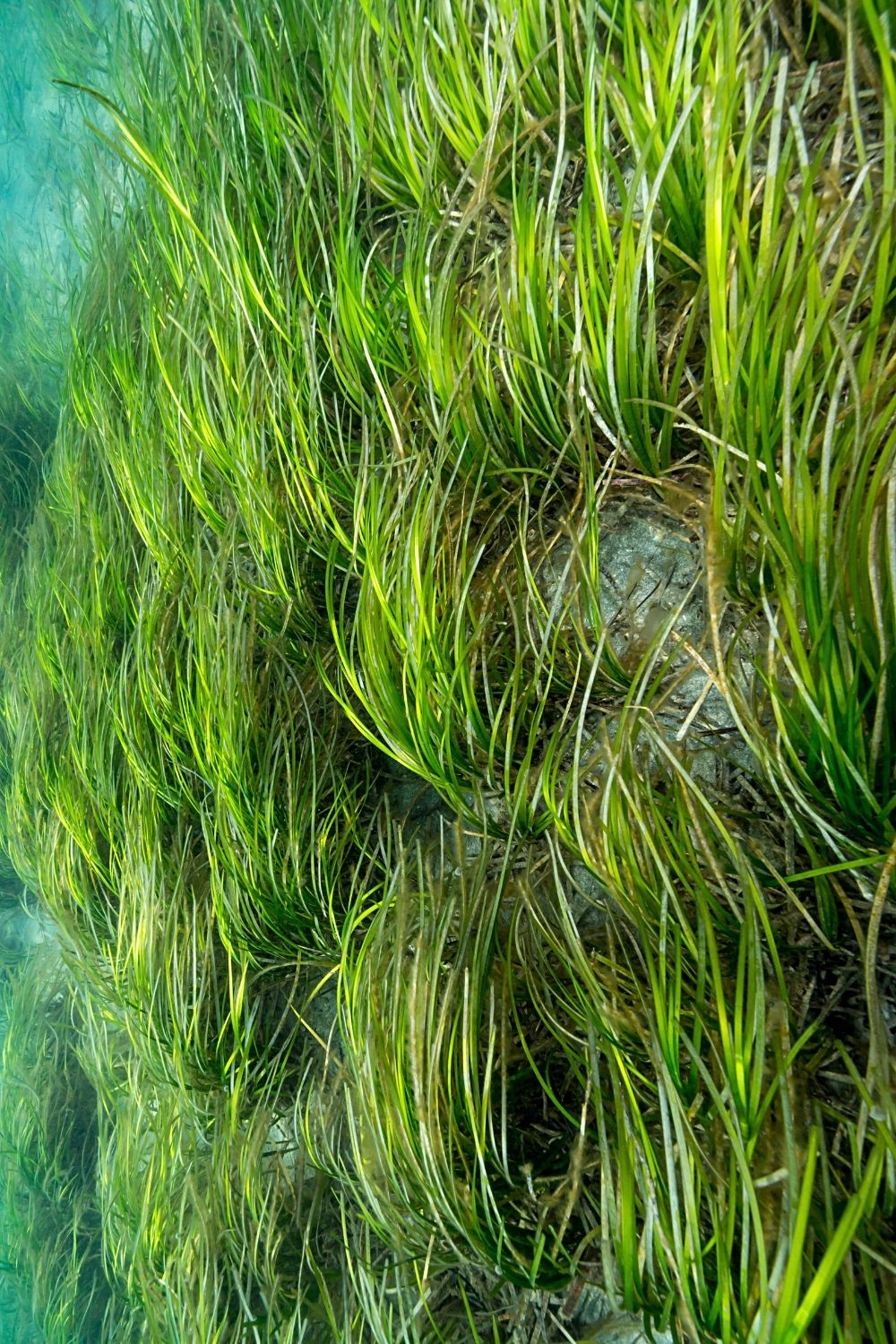
Eelgrass is one of the aquatic plants you’ll commonly find in betta fish’s tank
Eelgrass is an underwater flowering plant, very common among aquariums with Betta fishes. Eelgrass can grow in muddy and sandy bottoms in aquariums and fish pots.
Moreover, Eelgrass is among the most abundant plant species and not a seaweed.
Eelgrass presents itself so elegantly among the other coral reefs and underwater plants in your Betta aquarium.
- Scientific name: Vallisneria
- Family: Hydrocharitaceae
- Temperature: between 59-86 °F (15-29°C)
- Fertilizer: weekly fertilization
- pH: 6.5 – 8.5
- Lighting: natural/artificial Moderate to high lighting
- Soil: 3 inches of aquarium soil, gravel, or sand
- Growth Rate: Fast
- Humidity: 40–70%
14. Banana Plantmas Moss
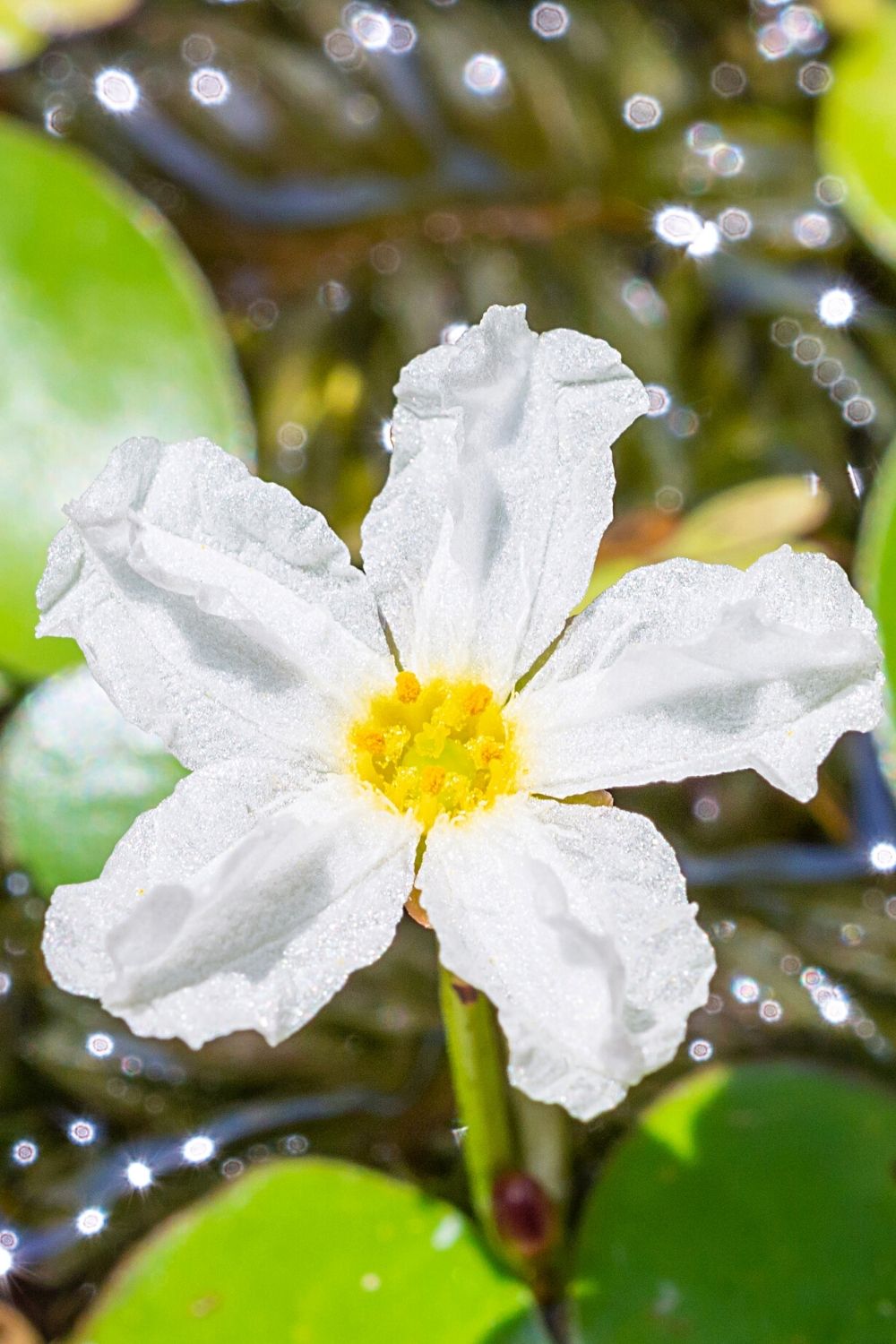
Banana Plantmas Moss is another suitable plant you can grow in your betta fish’s tank
Banana Plantmas Moss is a suitable plant for fish tanks having Betta fishes.
Banana Plantmas Moss needs a tough two-inch substrate like gravel or sand to have stability and grow.
- Scientific name: Nymphoides Aquatica
- Family: Menyanthaceae
- Temperature: 68-81°F (20-27°C)
- Fertilizer: Add a little diluted natural fertilizer to the water monthly
- pH: 6 – 7.2
- Lighting: Grows best in bright or high lighting conditions, but can tolerate minimal lighting
- Soil: Soil, gravel, or sand
- Growth Rate: Medium
- Humidity:60%
15. Java Fern
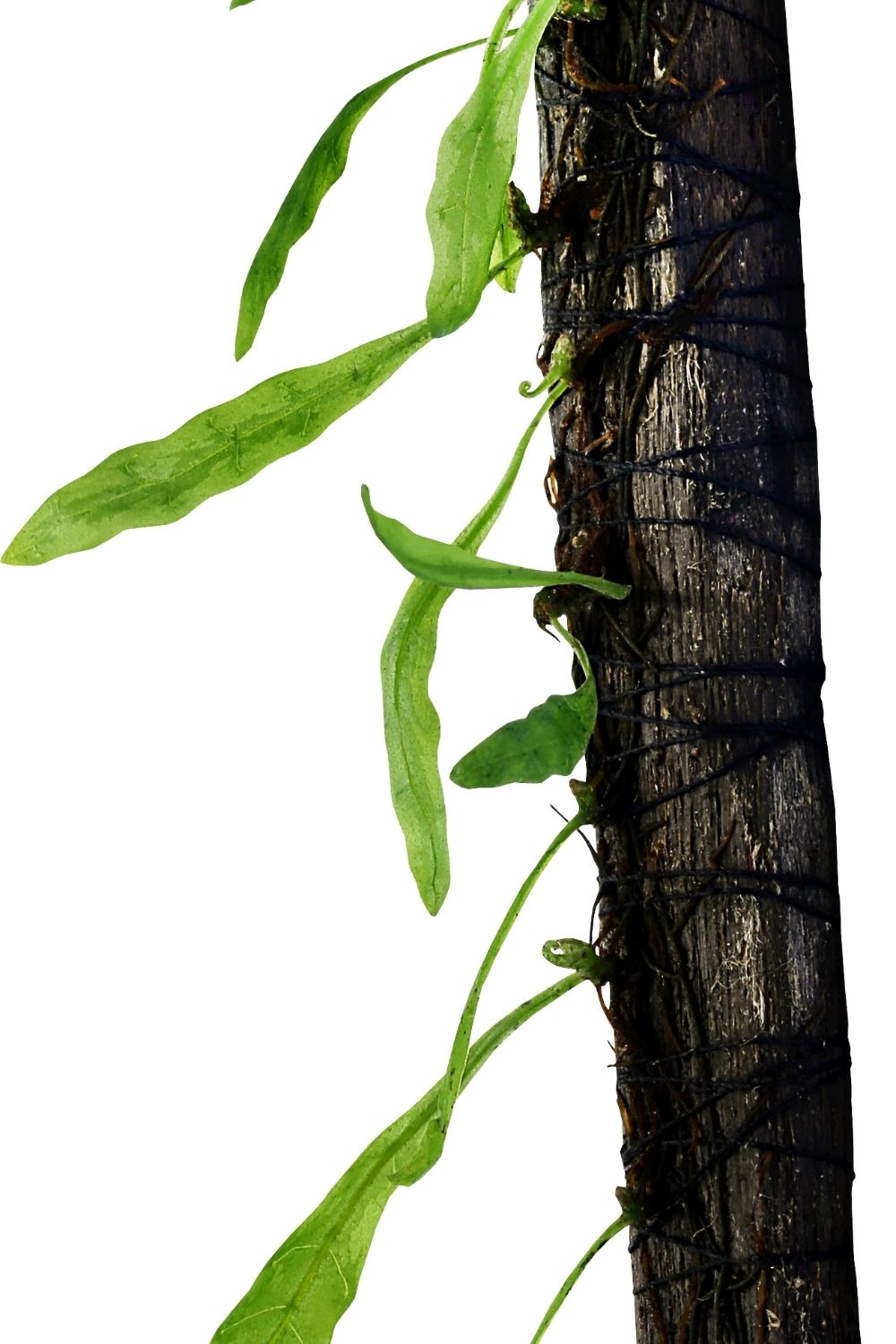
Java Fern, for it to grow in a betta fish’s tank, requires 6 hours of incoming light
Java Fern comprises of Rhizome and leaves, where the Rhizome is the anchoring part of the fern.
Java Fern requires about six hours of incoming light, making it the most reliable plant for Fish in the aquarium.
- Scientific name: Microsorum pteropus
- Family: Polypodiaceae
- Temperature: 70-75 °F degrees optimal, can tolerate 60-83°F.
- Fertilizer: Add a little diluted natural fertilizer to the water monthly
- pH: 6.0 to 7.5.
- Lighting: Soft fluorescent lamps or incandescent bulbs that are small
- Soil: plantlets to rocks or wood pieces.
- Growth Rate: very slow
- Humidity:90%
16. Ulvaceus Wavy Sword Plant
Ulvaceus is a widespread tall growing plant, also known as an aquatic plant, having cone-shaped and hairy structures.
Ulvaceus is capable of growing about 18 inches depending upon the aquatic and environmental conditions where the plant is kept.
- Scientific name: Aponogeton ulvaceus
- Family: Aponogetonaceae
- Temperature: around 72°F (22°C)
- Fertilizer: fertilized monthly
- pH:5-8
- Lighting: low or high light
- Soil: Use aquarium soil as it’s nutrient heavy
- Growth Rate: Rapid (1ft in a month)
- Humidity:70%
17. Christmas Moss
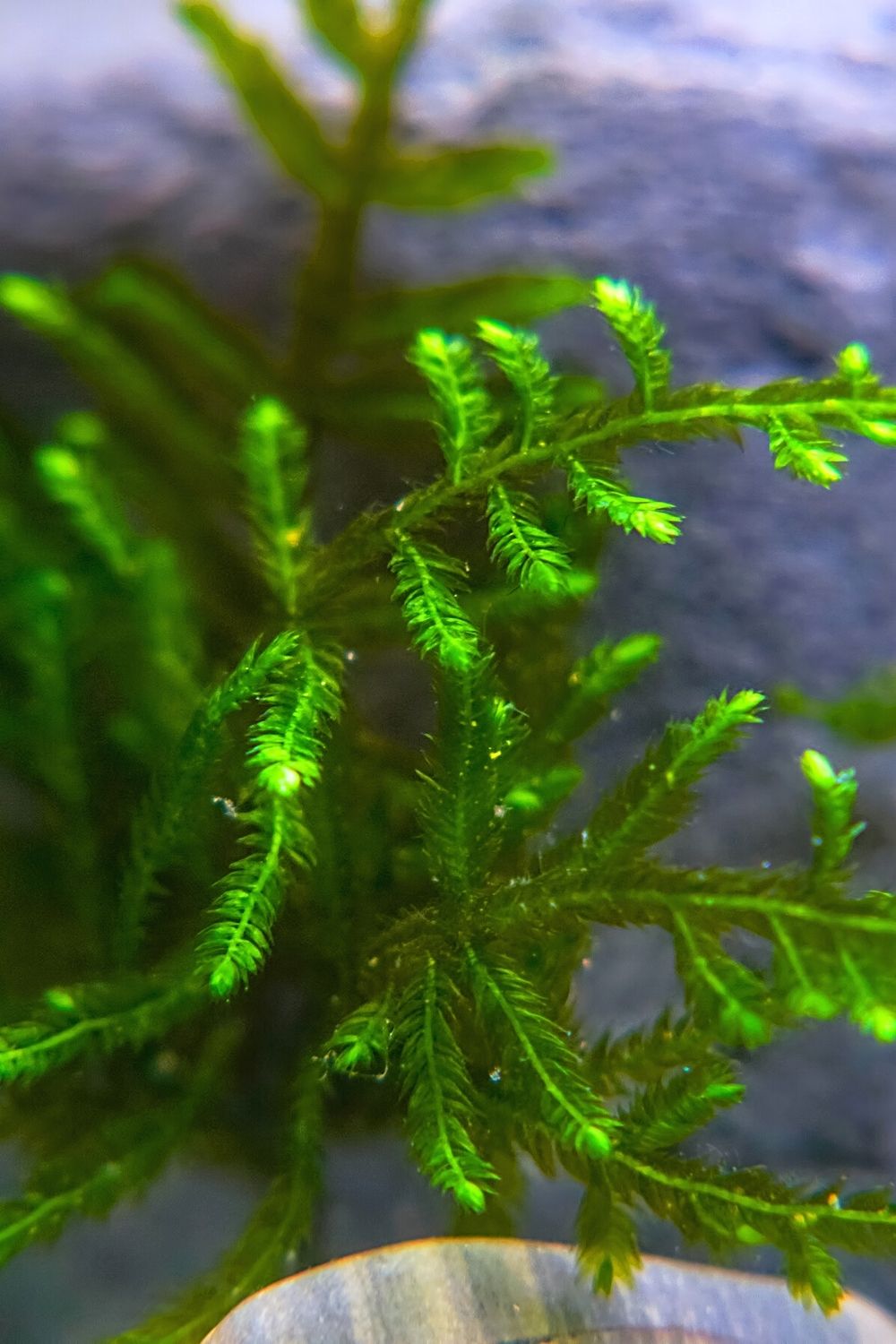
Christmas Moss grows well in a betta fish’s tank if the water cycle’s maintained well
Christmas Moss hails from the Dutch-style fish pots and aquariums. The growth of Christmas Moss depends upon the hygiene and maintenance of the aquatic tank.
Christmas Moss is expected to grow well if the water flow is maintained throughout the cycle.
- Scientific name: Vesicularia montagnei
- Family: Hypnaceae
- Temperature: 70-90°F (21-32°C)
- Fertilizer: doesn’t need fertilizer.
- pH: between 5 and 7.5
- Lighting: Medium or low lighting
- Soil: gravel or sand.
- Growth Rate: Slow to Medium
- Humidity: High humidity (80-100%)
18. Amazon Frogbit
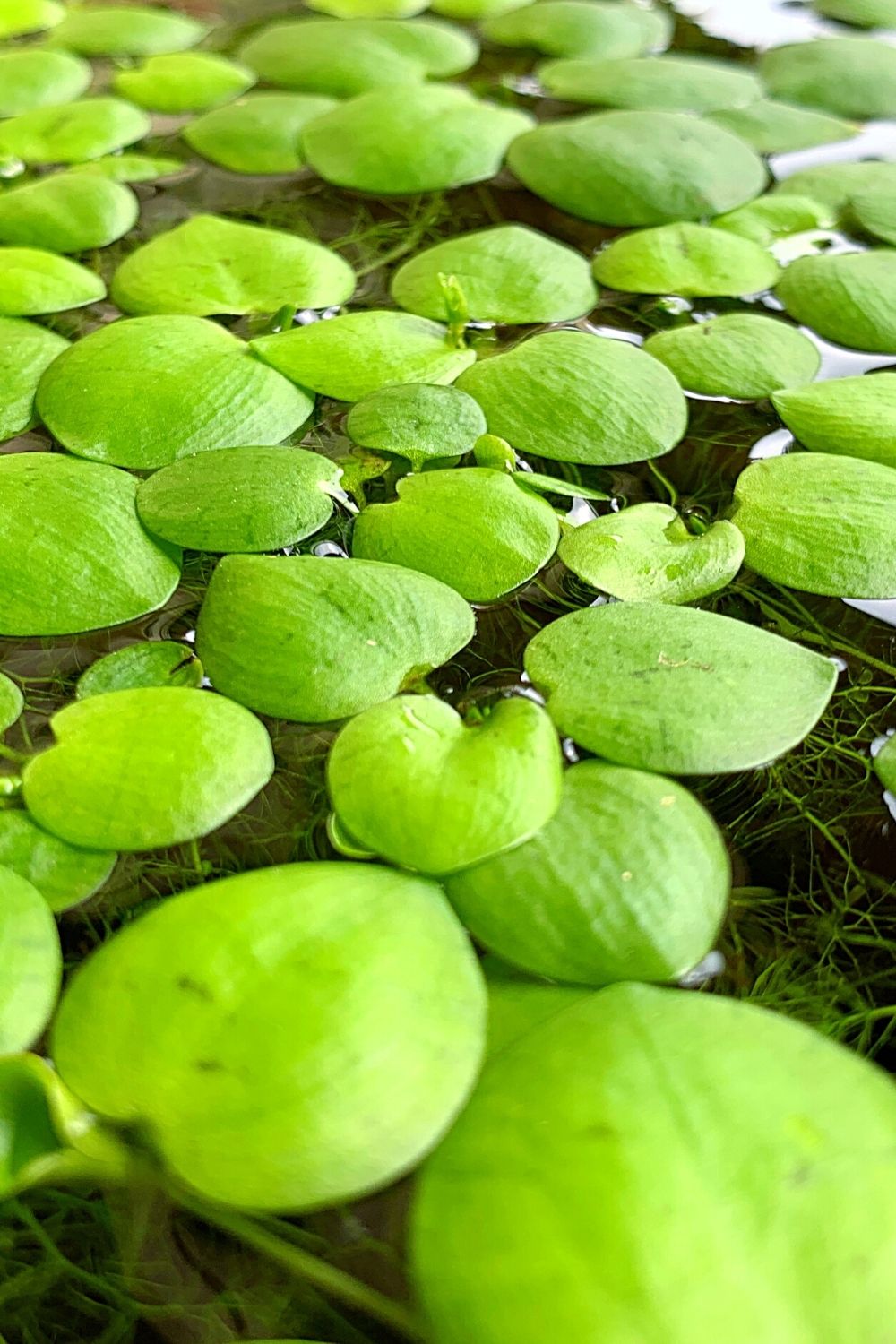
Amazon Frogbit offers excellent cover for betta fish and shrimps
Amazon Frogbit has the ability to remain afloat in aquariums, fish ponds, and small water bodies.
Amazon Frogbit offers a great shield and cover for shy fishes like Betta and shrimps.
- Scientific name: Limnobium laevigatum
- Family: Hydrocharitaceae
- Temperature: 68-86°F (20-30°C)
- Fertilizer: add to water regularly
- pH: 6.0-7.5
- Lighting: Medium to high
- Soil: gravel or sand.
- Growth Rate: Moderate to fast growth rate
- Humidity: High humidity 80%
19. Water Clover
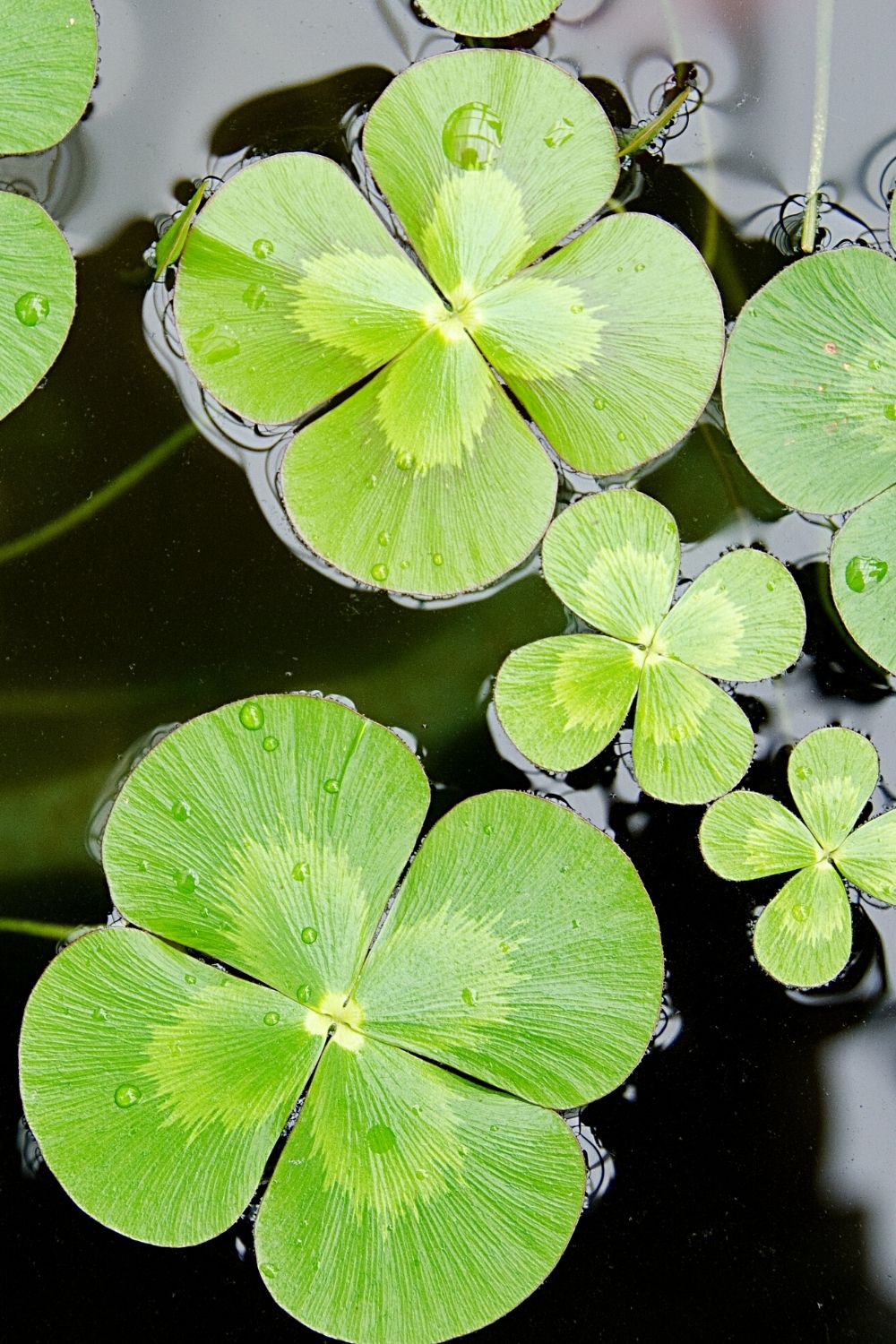
You can grow Water Clover together with Duckweed in your betta fishes’ tank
Water Clover is a type of Fern which grows in mud, depending upon other botanic conditions.
Water Clover is mostly seen with Duckweeds which have the ability to float on water bodies.
- Scientific name: Marsilea
- Family: Marsileaceae
- Temperature: 71-82°F (22-28°C)
- Fertilizer: fertilized every two weeks.
- pH: 6.5-7.5
- Lighting: best grown under partial sun
- Soil: sand-type or fine gravel soil that’s nutrient-rich
- Growth Rate: fast
- Humidity: relative humidity (45–55%)
20. Water Sprite
Photo Credit: @baystateaquatics on Instagram!
Water Sprite is commonly known as water fairy as they have the ability to resonate with abiotic conditions and grow at a decent rate.
Upon preferences, Water Sprite can be used as a floating plant for providing direct shelter to shrimps and baby fishes.
Water Sprite is a must-have plant in the Betta aquarium, as it offers maximum protection and has a high growing intensity and rate.
- Scientific name: Ceratopteris thalictroides
- Family: Brake family
- Temperature: 68 –80°F (20-26°C)
- Fertilizer depends upon direct nutrients from the waterbody. However, liquid fertilizers can be added seasonally.
- pH: 6.0 – 8.0
- Lighting: optimum tank lighting is sufficient
- Soil: soil bed made with sand and gravel
- Growth Rate: Fast
- Humidity: relative humidity 60-70%
21. Java Moss
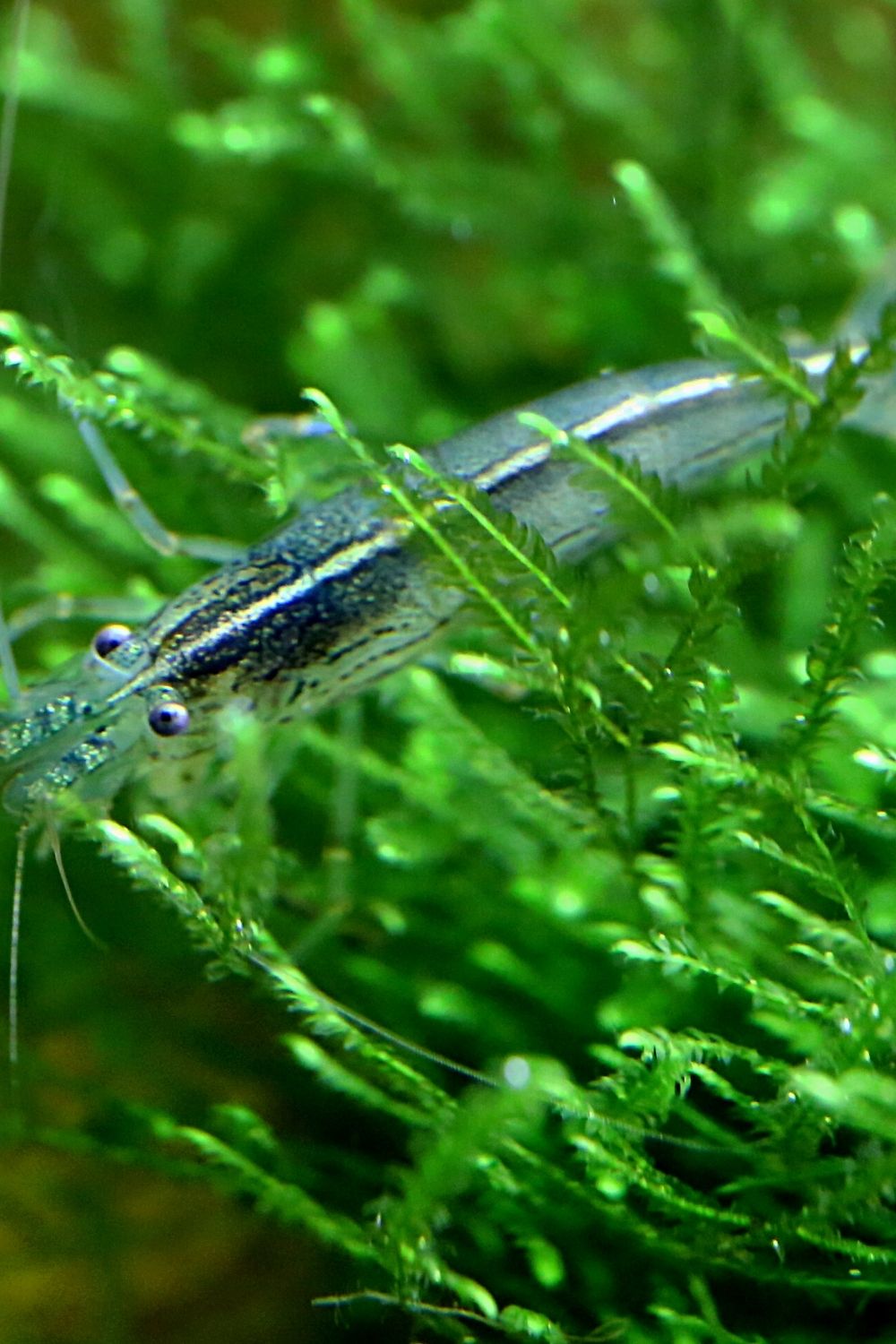
Java Moss is another aquatic plant suitable for betta fish as they tend to stay behind their leaves
Java Moss is among the easiest plants to grow and maintain throughout the year.
They are the perfect fit for aquariums with Betta fishes and other species that tend to stay behind the leaves of aquatic plants.
- Scientific name: Taxiphyllum Barbieri
- Family: Hypnaceae
- Temperature: 60-86°F (15-30°C)
- Fertilizer: Java Moss’s growth boosts on fertilizer; however, no such fertilizer is required.
- pH: 5.0-8.0
- Lighting: Minimal lighting
- Soil: driftwood, stones, and rocks
- Growth Rate: Fast
- Humidity: 80-100%
22. Anacharis
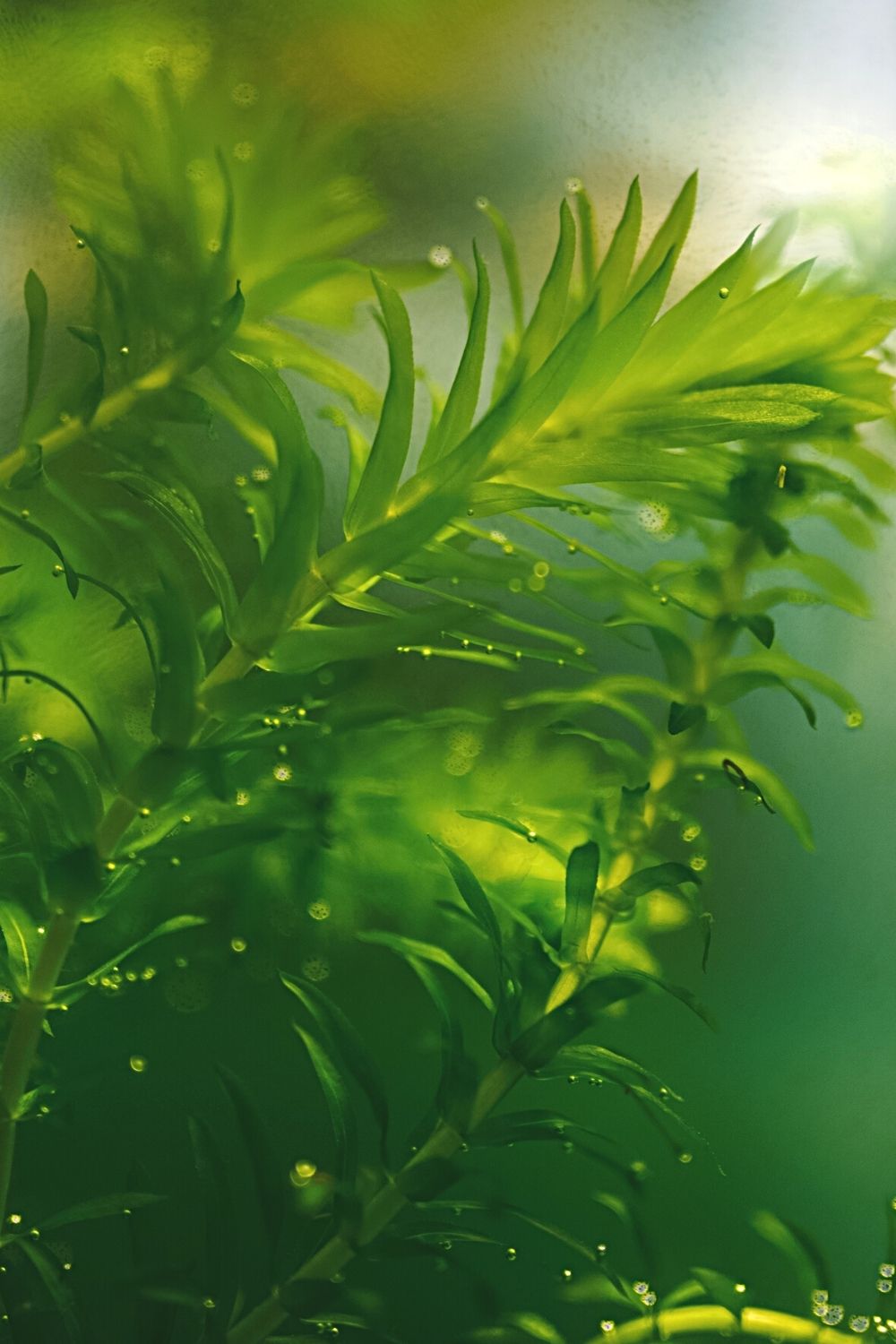
Anacharis grows well in a betta fish’s tank under light to moderate lighting conditions
Anacharis is a plant with a long stem and is also known as Elodea. One of the most peculiar features of Anacharis is that they can withstand any aquatic conditions and continue growing.
Anacharis does well under moderate and light lighting conditions; however, it’s recommended to look out for Algae if lighting gets high or intense.
- Scientific name: Elodea
- Family: Waterweeds
- Temperature: 72 –78°F (22-25°C)
- Fertilizer: Well composed aquarium based fertilizers are substantial for Anacharis
- pH: 6.5 – 7.5
- Lighting: Moderate to light lighting conditions
- Soil: gravel or nutrient-rich substrate
- Growth Rate: Fast
- Humidity: 60-80%
23. Hornwort
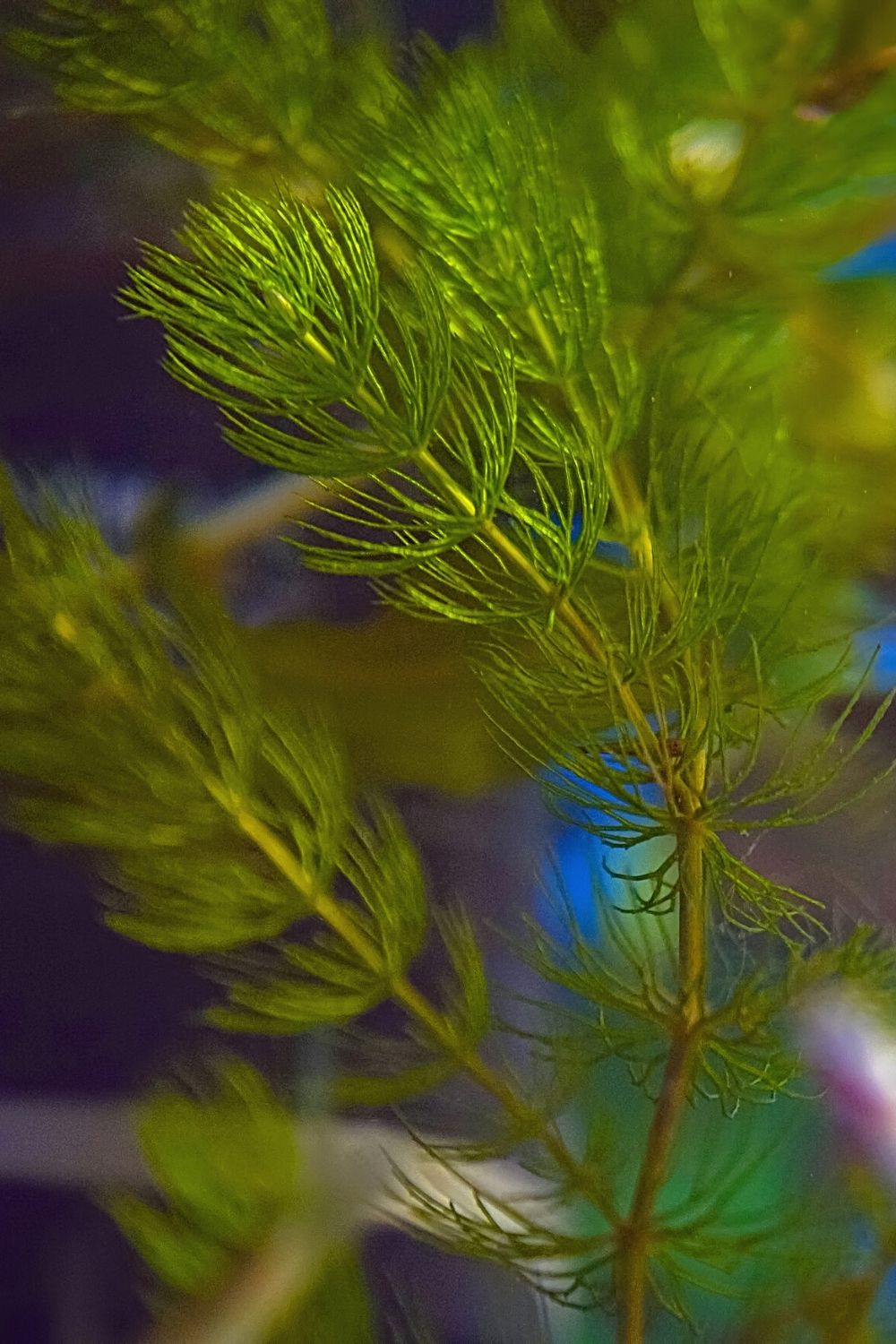
Hornwort is another great plant to grow in your betta fish’s tank
Hornworts are among the 300 species of nonvascular plants that grow and sustain under damp conditions.
Hornworts have the ability to thrive in temperate and tropical regions, where temperatures remain high all year long.
- Scientific name: Anthocerotophyta
- Family: Hornwort
- Temperature: 50-85°F (10-29°C)
- Fertilizer: No such specialized fertilizers are required.
- pH: 6 – 7.5
- Lighting: moderate lighting conditions
- Soil: don’t require a substrate
- Growth Rate: Fast
- Humidity: maximum rate of humidity
24. Cryptocoryne Parva
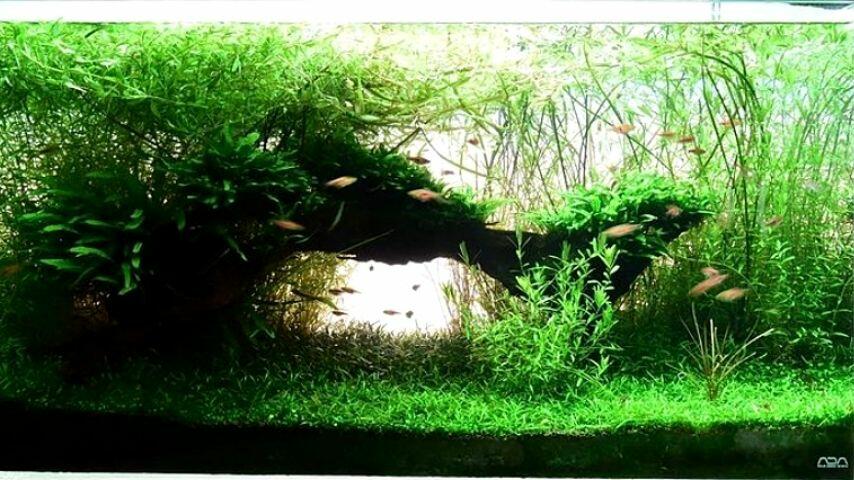
Photo Credit: @morita2501 on Instagram!
Cryptocoryne Parva is among the smallest Cryptocorynes, mostly found across Sri Lanka.
Its changing leaf colors are among the few alluring characteristics that attract many hobbyists.
- Scientific name: Cryptocoryne Parva
- Family: Araceae
- Temperature: 68-84°F (20-28°C)
- Fertilizer: No such specialized fertilizers are required.
- pH: 6 – 7.5
- Lighting: low lighting conditions
- Soil: enriched substrates
- Growth Rate: Slow
- Humidity: 70-80%
25. Alternanthera Rosaefolia
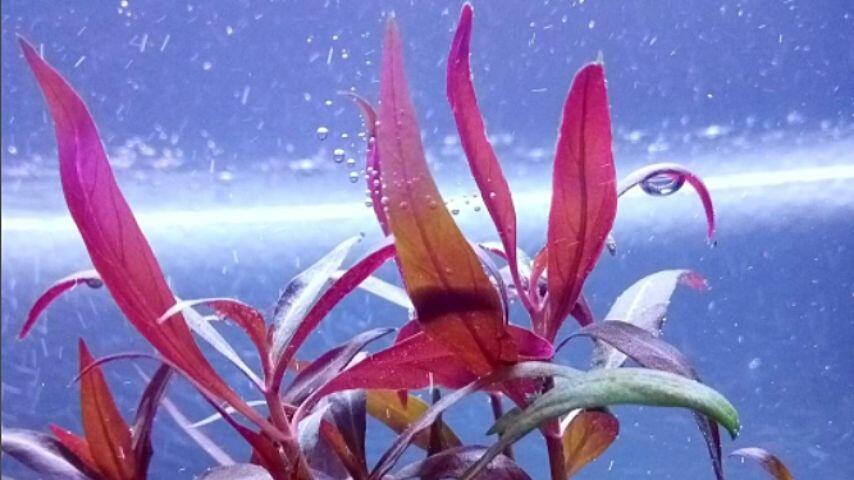
Photo Credit: @green_vibes21 on Instagram!
Alternanthera Rosaefolia is commonly known as Magenta water hedge due to its alluring magenta leave’s color.
It has long, pointed leaves and reddish-purple stems. Alternanthera Rosaefolia is among the top plant preferred by Betta fishes.
- Scientific name: Alternanthera reineckii
- Family: Amaranthaceae
- Temperature: 73-80°F (22-26°C)
- Fertilizer: co2 infused fertilizers for regular nutrient dosing
- pH: 5-7
- Lighting: high-low lighting
- Soil: Neutral to acidic soils depending upon substrates
- Growth Rate: Slow
- Humidity: 40-50%
26. Betta Bulb
Betta Bulb is among the top choices of many hobbyists that love having Betta fishes in their customized aquariums. Betta bulbs have the ability to grow quickly under optimum conditions.
Betta bulbs are an incredible choice for beginners as they don’t require any strict or timely maintenance.
- Scientific name: Aponogeton
- Family: Bettas
- Temperature: 76-80°F (24-26°C)
- Fertilizer: nutrients based fertilizers required for growth
- pH: 6.5-7.5
- Lighting: high-low lighting intensity
- Soil: aquarium based substrates
- Growth Rate: High
- Humidity: 40-60%
27. Pogostemon stellatus ‘Octopus’
Pogostemon stellatus, commonly known as Octopus or Starwort, is found across Thailand and Laos Island.
Its vibrant and star-shaped grass-like structure creates a vivid and attractive environment in the aquarium.
- Scientific name: Pogostemon stellatus
- Family: Mints
- Temperature: 72-80°F (22-26°C)
- Fertilizer: liquid infused fertilizers for developmental growth
- pH: 6-8
- Lighting: Moderate to High intensity
- Soil: can grow in any substrate soil type
- Growth Rate: Slow
- Humidity: 40-60%
28. Peace Lily
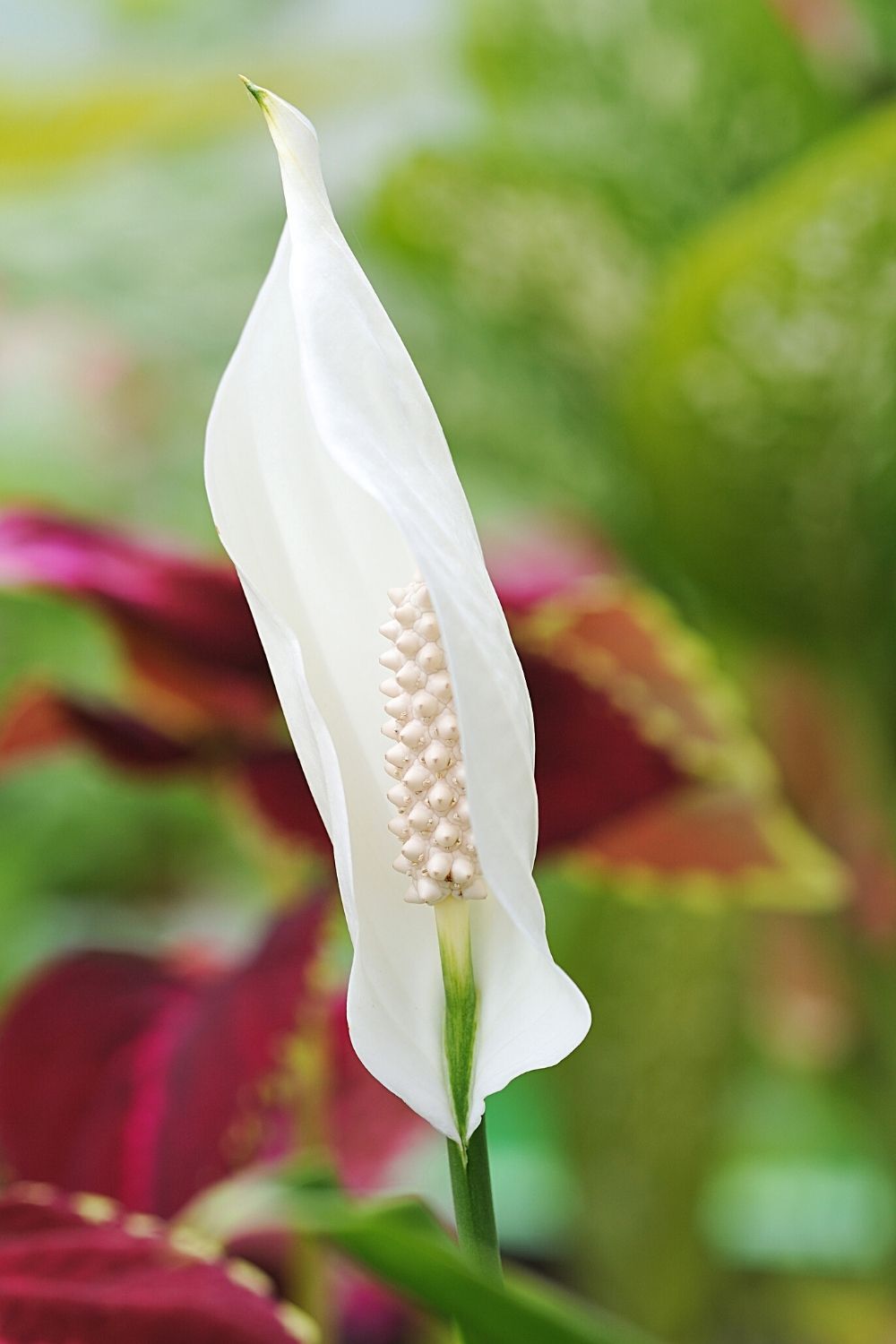
If you’re growing Peace Lily for your betta fish, make sure there’s an open space or cavity
Peace Lily is also known as a closet plant, which can be placed indoors and in aquariums. Peace Lily has the ability to grow and develop its own food processes.
However, it’s important to have an open space or a cavity for incoming light in fish tanks while planting Peace Lily. Peace Lily has an attractive texture, adding colors to your Betta aquarium of yours.
- Scientific name: Spathiphyllum
- Family: Arums
- Temperature: 65-80°F (18-26°C)
- Fertilizer: water-based fertilizers with a diluted balanced ratio
- pH: 5.8-6.5
- Lighting: Moderate or indirect sunlight
- Soil: can hold water with mix drainage pattern
- Growth Rate: Slow
- Humidity: 50-100%
29. Bamboo Plant
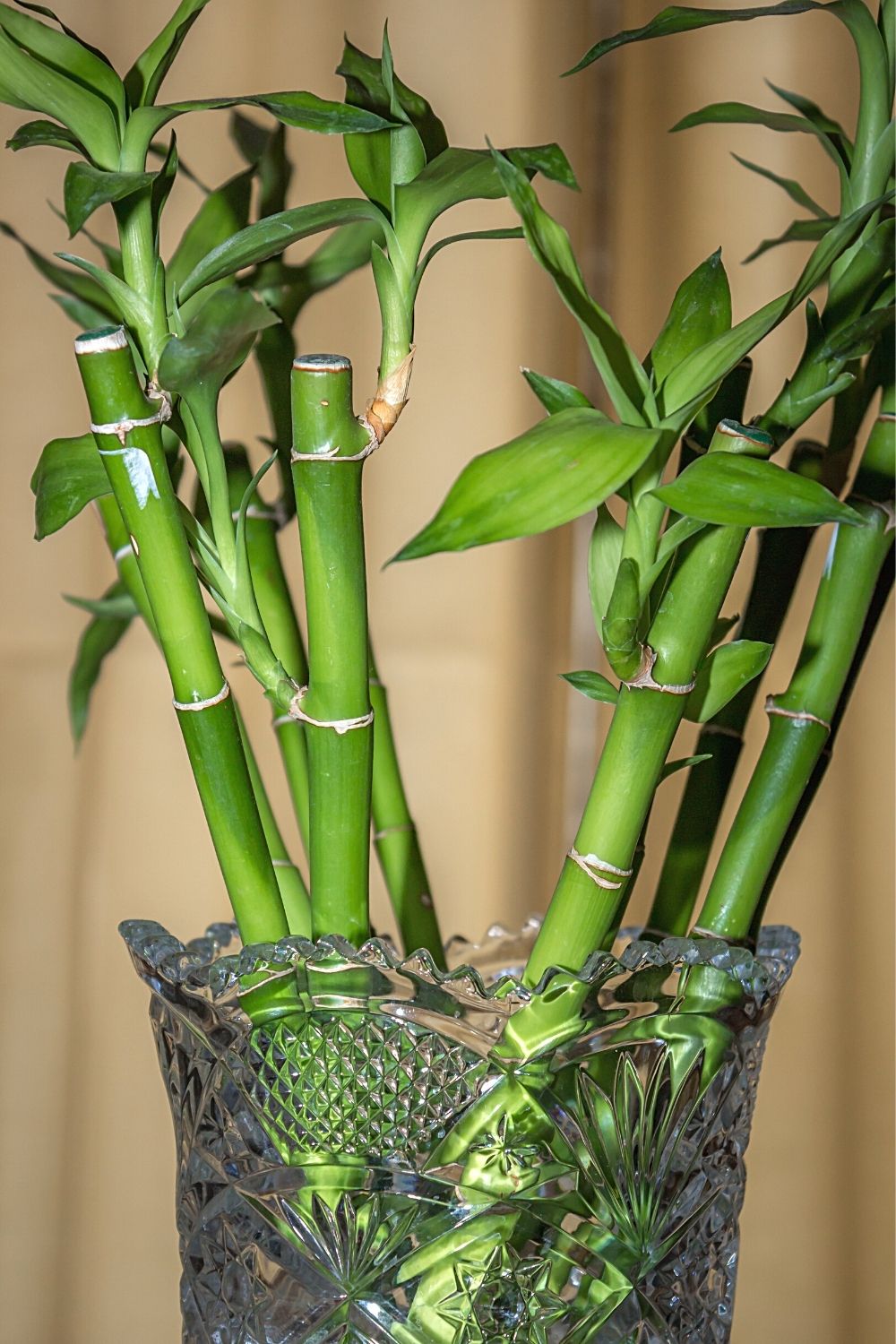
Bamboo Plant offers protection to baby fish like betta fish
Many experienced and amateur aquarists prefer having a few stalks of Bamboo plants in their aquarium. Bamboo plants grow fast, offering shelter and protection to baby fishes such as Betta fishes.
The bamboo plant is also known for reducing the nitrate percentages in the water tank.
- Scientific name: Bambusoideae
- Family: Grasses
- Temperature: 60-70°F (15-21°C)
- Fertilizer: organic or manure-based fertilizers for growth and nourishment
- pH: 5-6.5
- Lighting: six hours of direct or indirect sunlight
- Soil: can hold water with mix drainage pattern
- Growth Rate: Fast
- Humidity: above 50%
30. Marsilea Minuta
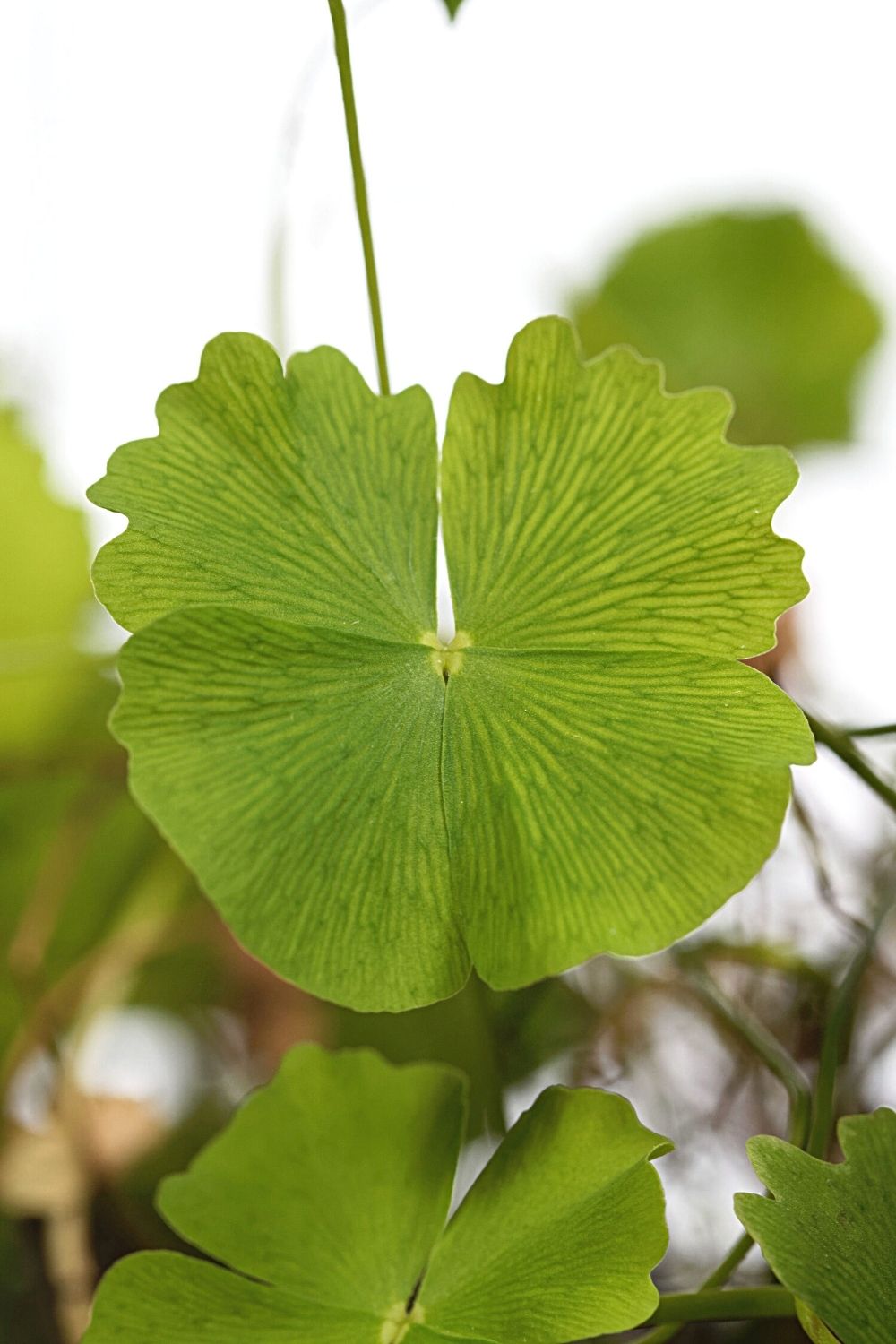
Marsilea Minuta, when grown for your betta fish, acts as lush green grass-like plants
Marsilea Minuta, also known as Dwarf Waterclover, is a type of aquatic fern used for fishes as a food plant. It can be grown in fish bowls, aquariums, and damped water bodies.
Marsilea Minuta acts as bed carpets in aquariums, offering lush green grass-like plants for fishes.
- Scientific name: Marsilea minuta L.
- Family: Marsileaceae
- Temperature: 71-82°F (22 to 28°C)
- Fertilizer: Substrate based fertilizer for nutrients
- pH: 5-7.5
- Lighting: High or low light
- Soil: nutrient-rich and composed sand type soil
- Growth Rate: Moderate
- Humidity: 40-80%
31. Pogostemon Helferi
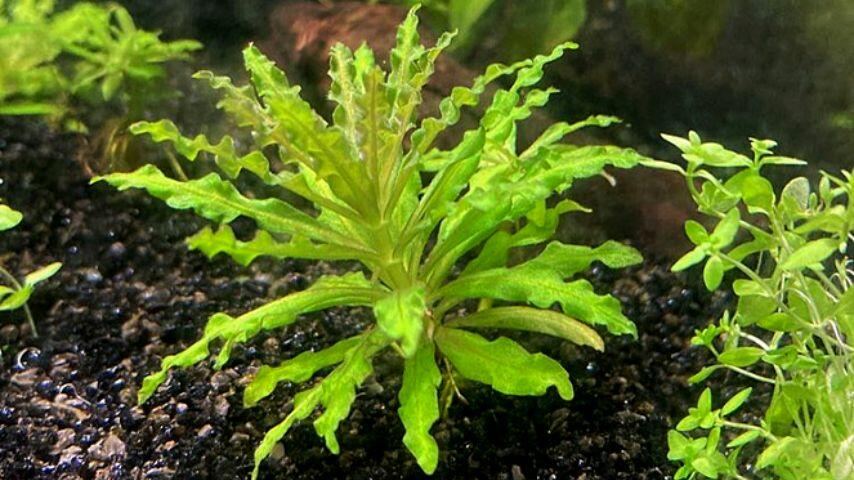
Photo Credit: @endlers_and_guppies on Instagram!
Pogostemon helferi is grown at a depth of 1.8 inches in the substrate, considering the acclimate and aquatic conditions. As Pogostemon spreads wide, it needs to be planted with 1-2 inches spacing.
Many hobbyists love having Pogostemon Helferi in their aquariums and plant pots. Fishes love playing and passing through the widespread leaves of Pogostemon Helferi.
- Scientific name: Pogostemon helferi
- Family: Mints
- Temperature: 73.4- 86°F (23-30°C)
- Fertilizer: CO2 boosters with active fertilizers would help in boosted growth
- pH: 6-7.5
- Lighting: low to strong lighting
- Soil: iron abundant with a plentiful amount of CaCo3
- Growth Rate: Moderate
- Humidity: 70-80%
32. Banana Plant
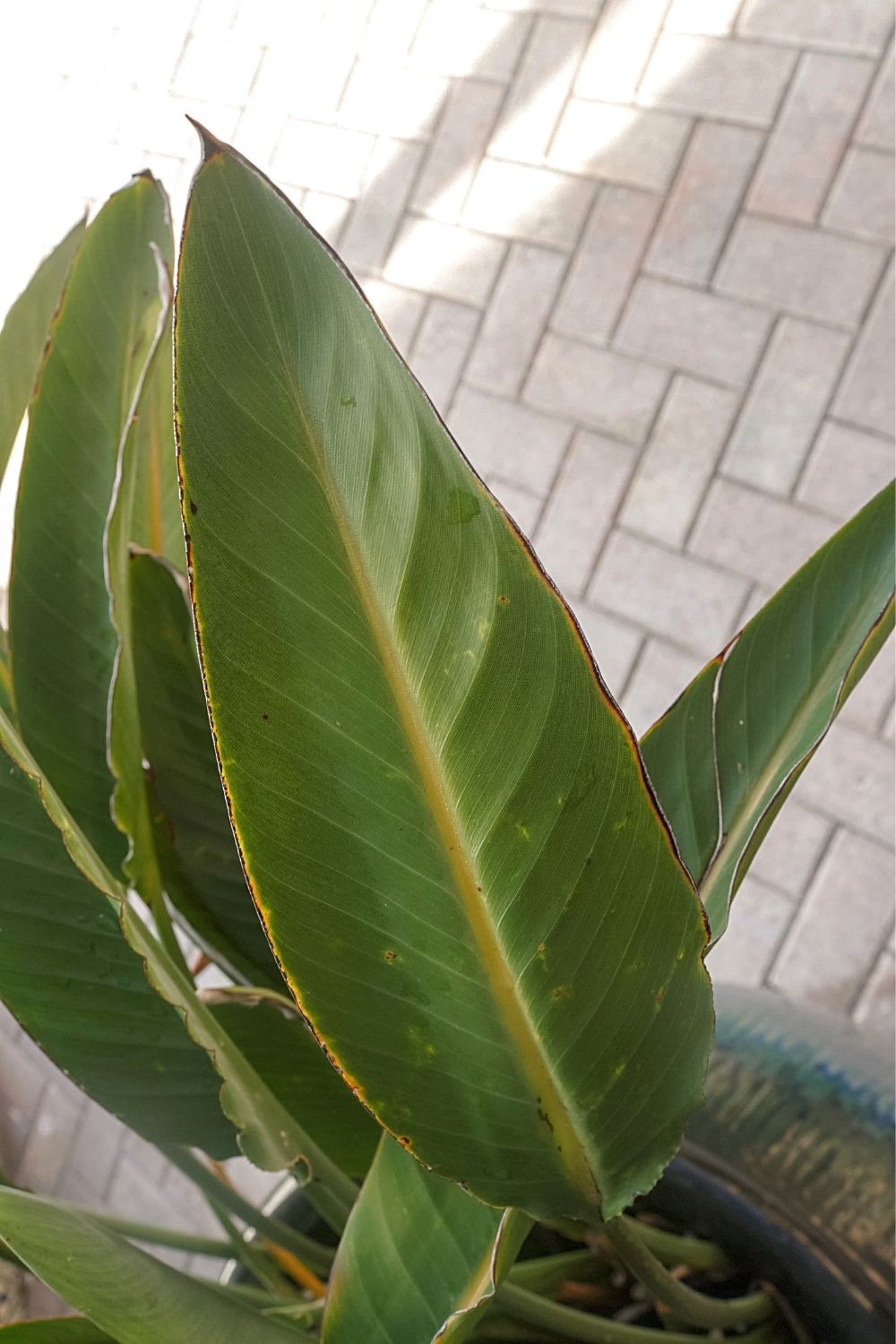
Betta fish love having a Banana Plant grown in their aquarium
Every aquarium should have an instilled banana plant in it, as Betta fishes love having a Banana Plant in their surroundings.
However, Banana Plant thrives in freshwater conditions with moderate lighting sources. One could always see a new or fresh leaf growing every week.
With time, as the Banana Plant settles, fresh roots and runners also get spread in every direction.
- Scientific name: Musa
- Family: Bananas
- Temperature: 75-95°F (24-35°C)
- Fertilizer: 8-10-8 (NPK) fertilizer for sharp growth and nourishment
- pH: 5.5-7.0
- Lighting: at least five hours of direct sunlight
- Soil: fertile and well-drained soil is recommended
- Growth Rate: Slow
- Humidity: 50% or greater
33. Anubia Nana
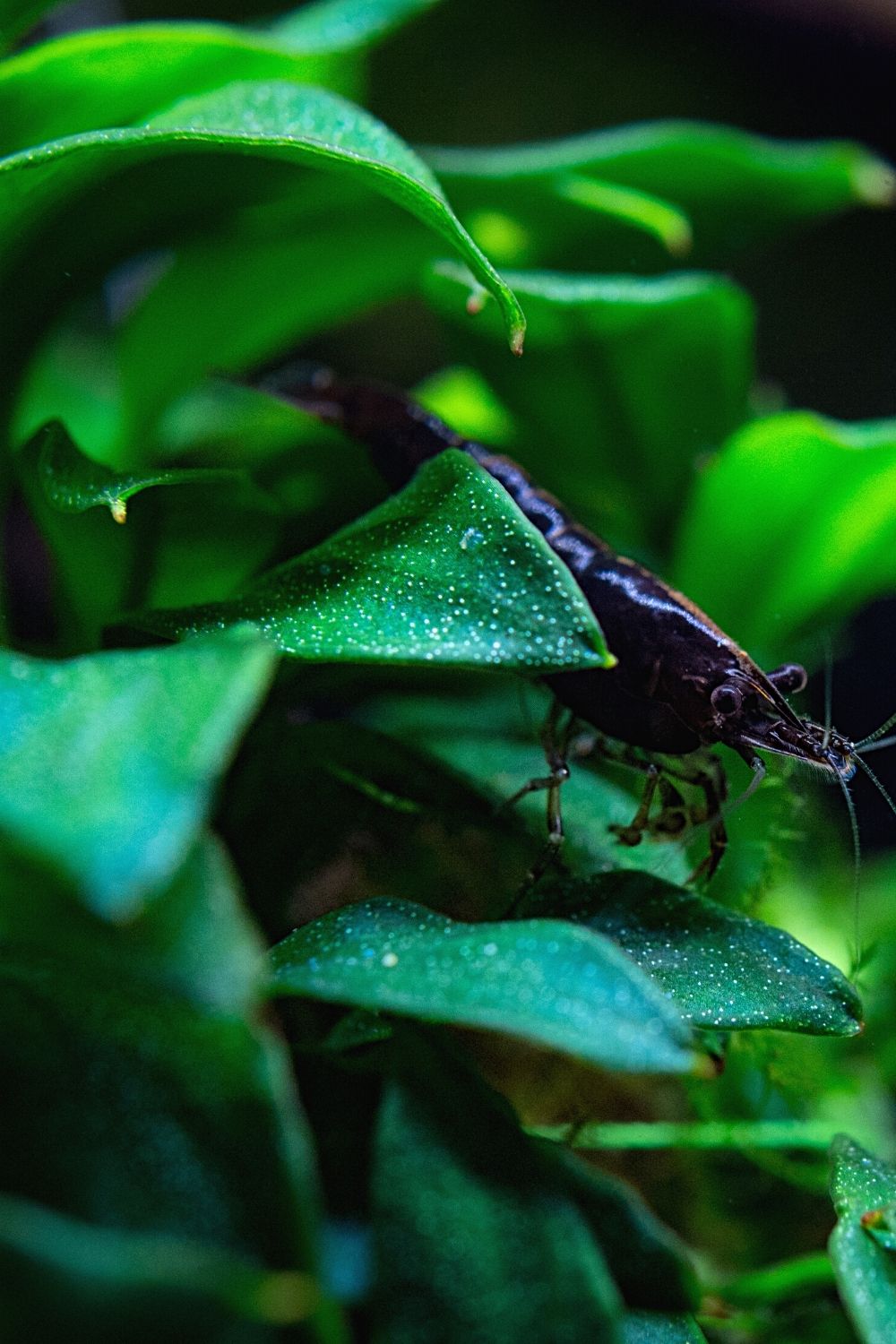
Anubia Nana is one of the rare plants that you can grow for your betta fish as they can’t damage it
Anubia Nana is the secret element for fish keepers who want their Betta fishes to thrive well under improved water quality. Anubia Nana is among the few rare plants which can’t be damaged to be killed by Fish.
It stays perfect in low lighting tanks and pots where sunlight or aquarium light doesn’t reach. Betta fishes love spending time around Anubia Nana and swirl around the roots of the plant.
Anubia Nana might require some specific growing conditions to grow best and attract fishes inside the aquarium.
- Scientific name: Anubias barteri var. nana
- Family: Arums
- Temperature: 72-82°F (22-27°C)
- Fertilizer: No such fertilizers are required.
- pH: 5.5-7.0
- Lighting: Low to moderate lighting
- Soil: can be grown in aqua soil as they even depend upon nutrient intake from soil
- Growth Rate: Slow
- Humidity: 70-90%
34. Carolina Fanwort
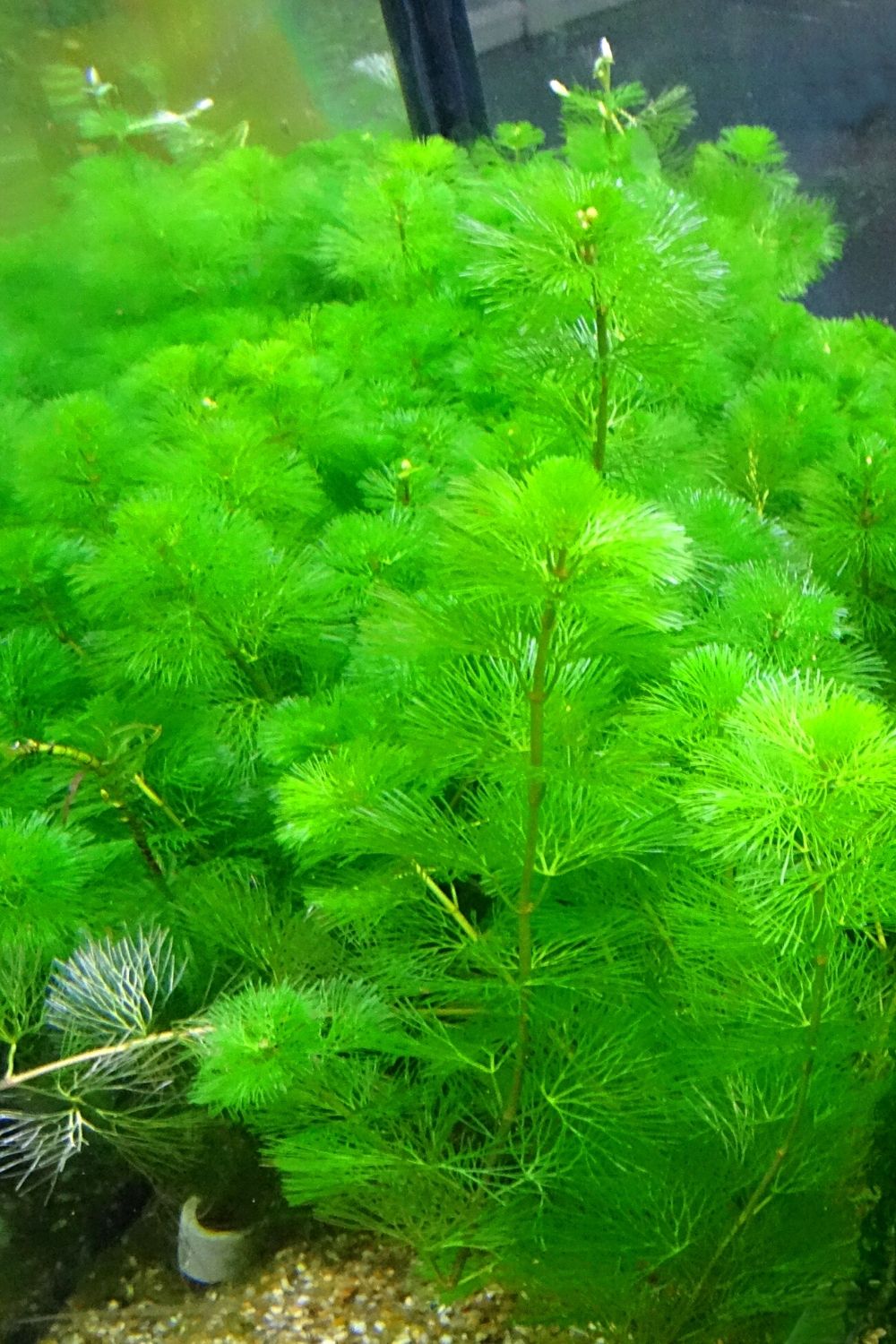
Carolina Fanwort grows at an ideal size for aquariums intended for your betta fishes
Carolina Fanwort, also known as Camboba, has the ideal size for aquariums and fits best Betta fishes. Carolina Fanwort has soft leaves, which keep attracting Betta fishes throughout the day.
Moreover, it has strong and rigid stems which can’t be disturbed or eaten by Fish. However, they can trap Fish, providing a comfy atmosphere.
- Scientific name: Cabomba caroliniana
- Family: Cabombaceae
- Temperature: 55-80°F (13-27ºC)
- Fertilizer: Fertilizers for strengthening roots and providing iron.
- pH: 4.8-7.8
- Lighting: High amount of lighting
- Soil: gravel-based substrate if required
- Growth Rate: Fast
- Humidity: 60-80%
35. Silk Plant
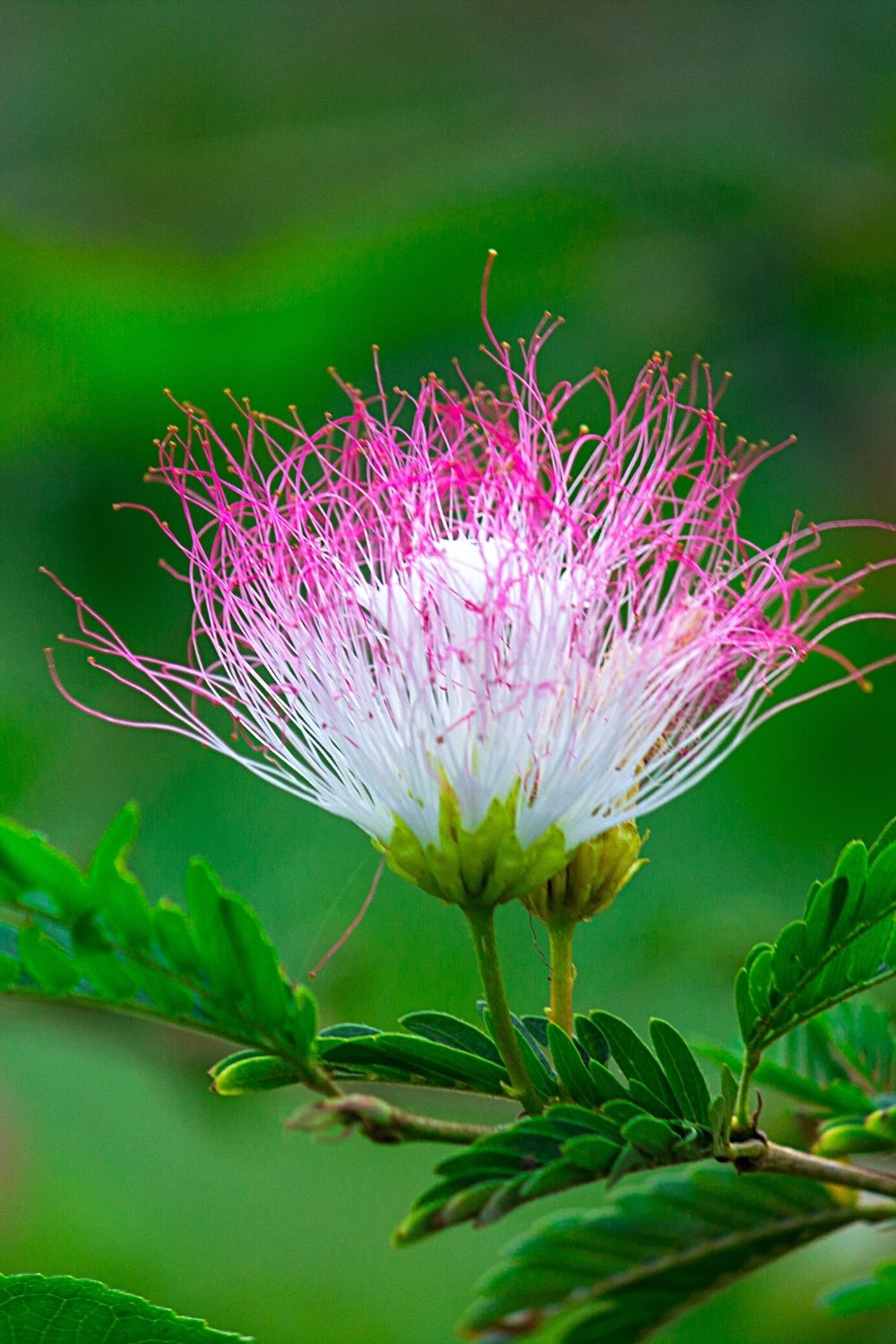
If you’re looking for an aquatic plant with different varieties for your betta fish, go for Silk Plant
Silk Plants come in different varieties; however, the silk plants for aquariums have broad leaves with plastic-covered ribs of wires.
Silk plants can come in handy once you manually trim their sharp edges and rough textures, which could damage the soft and delicate body of Betta.
Silk plants might get rusted over time, so removing them immediately after the rusted layer covers their leaves and roots is recommended.
- Scientific name: Albizia julibrissin
- Family: Legumes
- Temperature: around 25°F (-3°C)
- Fertilizer: Fertilizing with organic or compost fertilizer is recommended
- pH: 5.5 – 7.5
- Lighting: artificial aquarium lighting is sufficient
- Soil: Acidic, Neutral, Alkaline
- Growth Rate: Slow
- Humidity: 60-80%
36. Staurogyne Repens
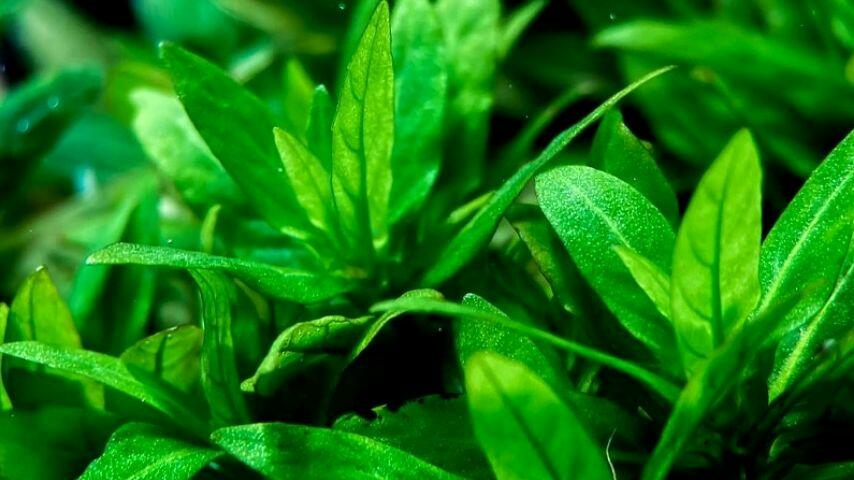
Photo Credit: @tkk.earthlynonsense on Instagram!
Staurogyne Repens is a lush green-looking plant with moist brownish stems. It is an underwater plant that can sustain aquarium temperatures, lighting, and water quality.
Staurogyne Repens spreads over the surface, taking over corals and reefs underwater. Both side growth and development of roots make Staurogyne Repens among the top preferences of Betta keepers.
Betta fishes love passing through the light textures of Staurogyne Repens, making an ideal ecosystem for the aquarium tank.
- Scientific name: Ebermaiera repens
- Family: Acanthaceae
- Temperature: 68°-86°F (20-30°C)
- Fertilizer: Premium fertilizers are required for maintaining lush green color and dense growth
- pH: 6-8
- Lighting: moderate to high depending upon aquarium placement
- Soil: soft substrate soil is ideal
- Growth Rate: Slow
- Humidity: 90% or more
37. Salvinia Minima
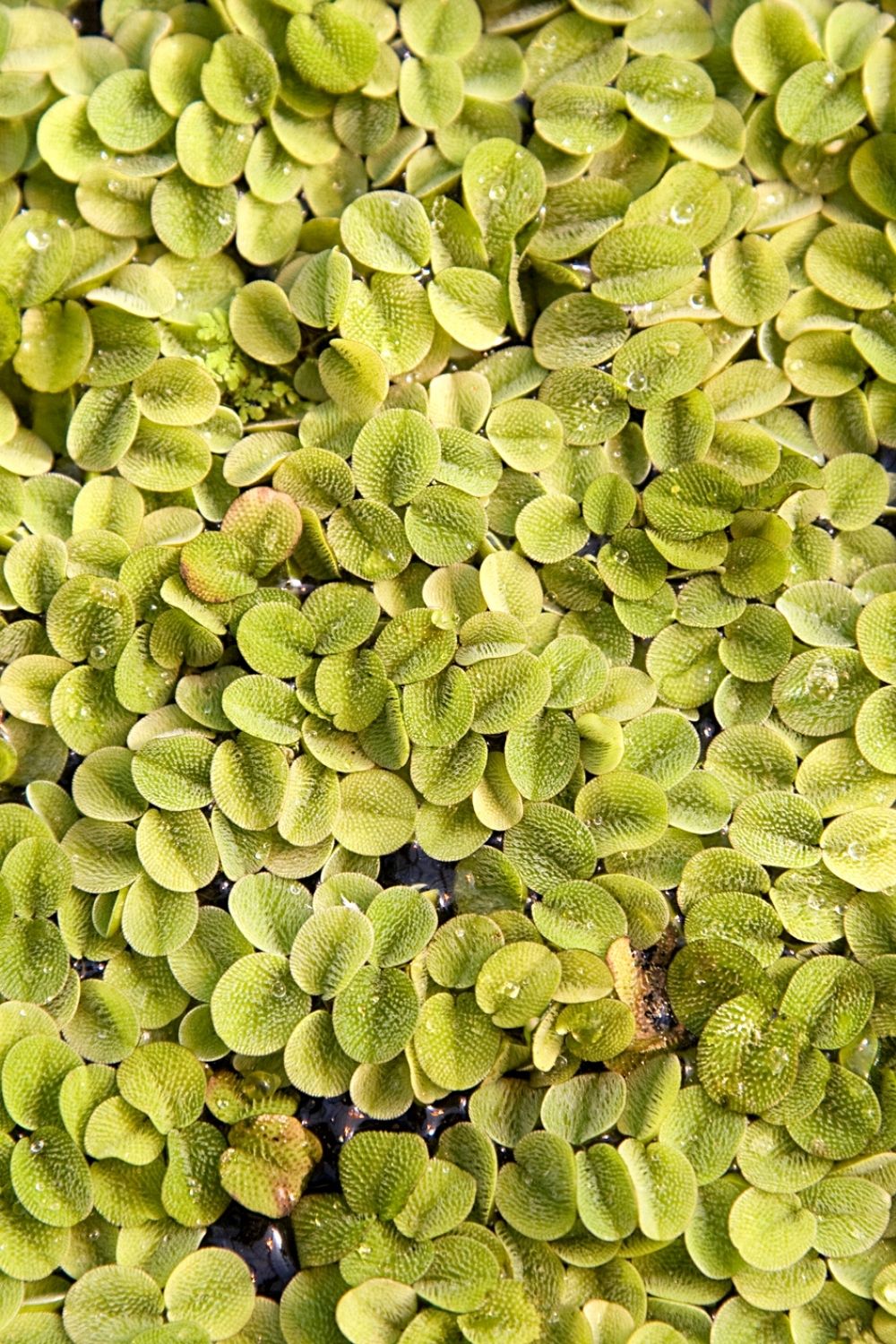
Salvinia Minima is the best aquatic plant to grow for your betta fish as they’re attracted to it
Salvinia minima is a type of aquatic fern that has the ability to grow on the surface of water bodies and aquariums.
Talking about the preferences of Betta fishes, Salvina minima is among the best species, which attracts Betta around them.
Salvinia minima survive best in aquariums having regular and gentle water flow to avoid any disturbances in their pores and support.
Salvinia minima require the least care and can be removed if required without any complications.
- Scientific name: Salvinia minima
- Family: Salviniaceae
- Temperature: 65° – 89°F (18-31°C)
- Fertilizer: Fertilization is recommended for dense and green growth of plants
- pH: 5-8
- Lighting: Moderate to high lighting is required
- Soil: moist and damp soil mixtures
- Growth Rate: Fast
- Humidity: 40-70%
38. Madagascar Lace Plant
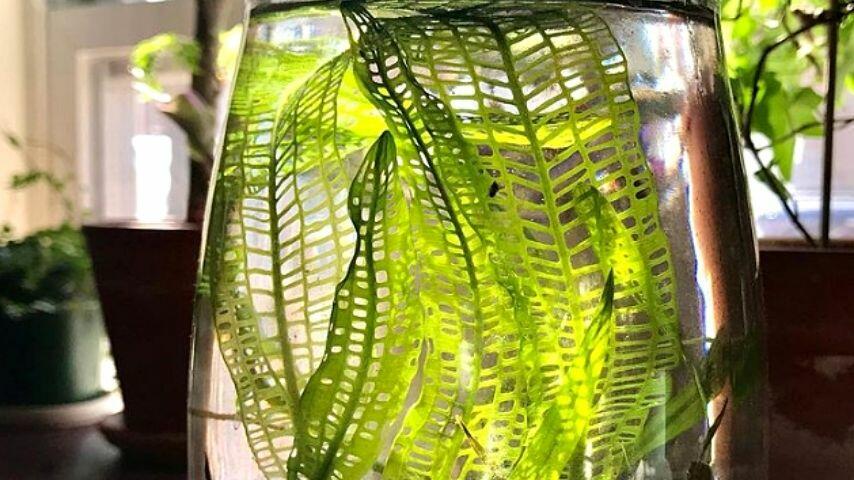
Photo Credit: @lordfierce on Instagram!
Madagascar lace plant is an excellent pick for Betta aquariums, as they have the ability to grow up to 1ft in length without any fertilizers or extra care.
With a fast-growing rate and decent leaf sizes, the Madagascar lace plant is ideal for Betta fishes.
During the initial stages, one might have to maintain it, but it would be a great addition to the aquarium in the long run.
- Scientific name: Aponogeton ulvaceus
- Family: Aponogetonaceae
- Temperature: 65° – 74°F (18-23°C)
- Fertilizer: low or no such need for fertilizers
- pH: 6.5-7.5
- Lighting: Moderate light intensity that doesn’t burn the leaf
- Soil: sufficient nutrient-packed soil with enrichen minerals
- Growth Rate: Fast
- Humidity: 40-60%
39. Rotala Rotundifolia
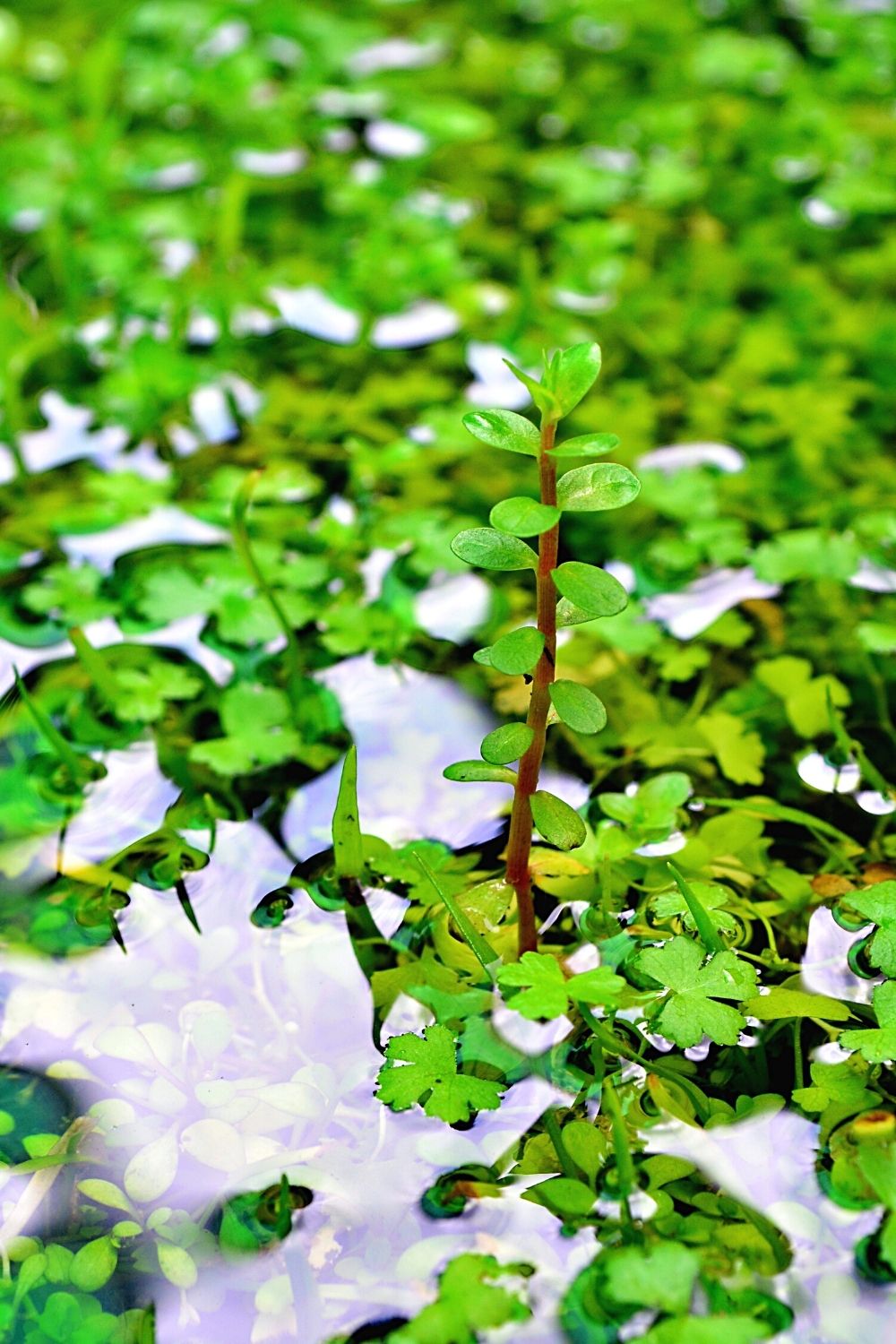
Another great aquatic plant to grow for your betta fish is Rotala Rotundifolia as it’s fast-growing and grows tall
Rotala rotundifolia, sometimes known as dwarf rotala, is frequently mistaken with Rotala indica. It is sold in the aquarium trade, although its legal status is unknown.
It’s a prevalent weed in rice fields and damp areas in India, China, Taiwan, Thailand, Laos, and Vietnam, and it’s also been brought to the US.
If you love having tall and fast-growing plants for your Betta fishes, then Rotala Rotundifolia has a growing rate of 6 inches on average.
- Scientific name: Rotala rotundifolia
- Family: Lythraceae
- Temperature: 62-82°F (16-27°C)
- Fertilizer: Not required or mandatory
- pH: 4-8
- Lighting: Moderate to High depending upon preferences
- Soil: Gravels or sandy
- Growth Rate: Fast
- Humidity: 50-60%
40. Tiger Lotus
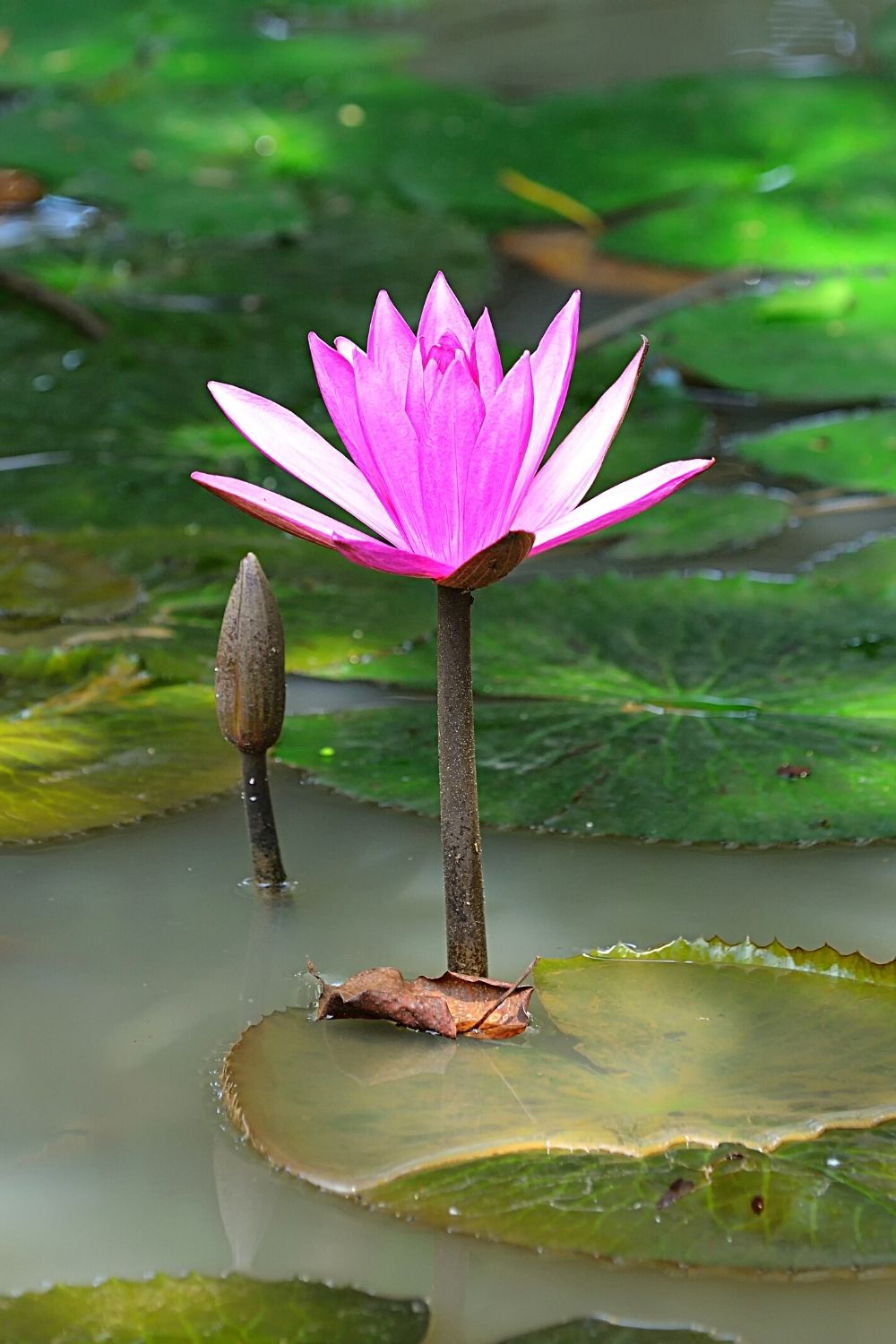
Tiger Lotus is another great aquatic plant to grow for your betta fish as they’re colorful
Tiger Lotus is also known as the famous white Egyptian lotus or even a water lily.
The overall texture and colors of Tiger Lotus make it among the top preferences of many hobbyists who want their Betta fishes to be surrounded by colorful flowers all day long.
- Scientific name: Nymphaea lotus
- Family: Water lilies
- Temperature: 71-82°F (21-27°C)
- Fertilizer: CO2 and liquid-based fertilizers for the brighter and glowing look of the plant
- pH: 6-8
- Lighting: Artificial lighting depending upon Watts and water per gallon ratio
- Soil: Fine-grained and leveled substrate
- Growth Rate: Fast
- Humidity: over 50%
Conclusion About The Best Plants for Betta Fish
Like every Fish, Betta fishes have a few preferences and likings that make them peculiar and energetic in the aquarium pots or tanks.
If you want your Betta fishes to be healthy over a long time, using the plants mentioned above in your aquarium tanks is recommended.
Talking about the light intensity of every plant, it’s important to go through its specifications and desired conditions for growing.
If you are a beginner, it’s recommended to use plants that don’t require regular maintenance or cleaning.

![40 Best Plants for Betta Fish – Best Guide [2022]](https://www.animalfoodplanet.com/wp-content/uploads/2022/04/40-Best-Plants-for-Betta-Fish-720x405.jpg)
